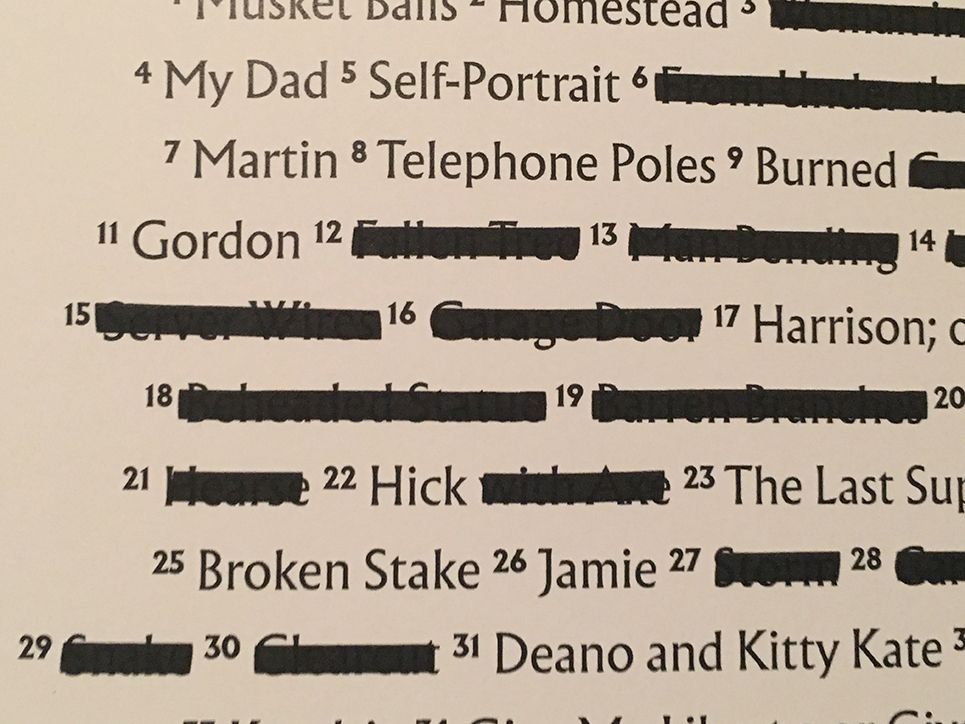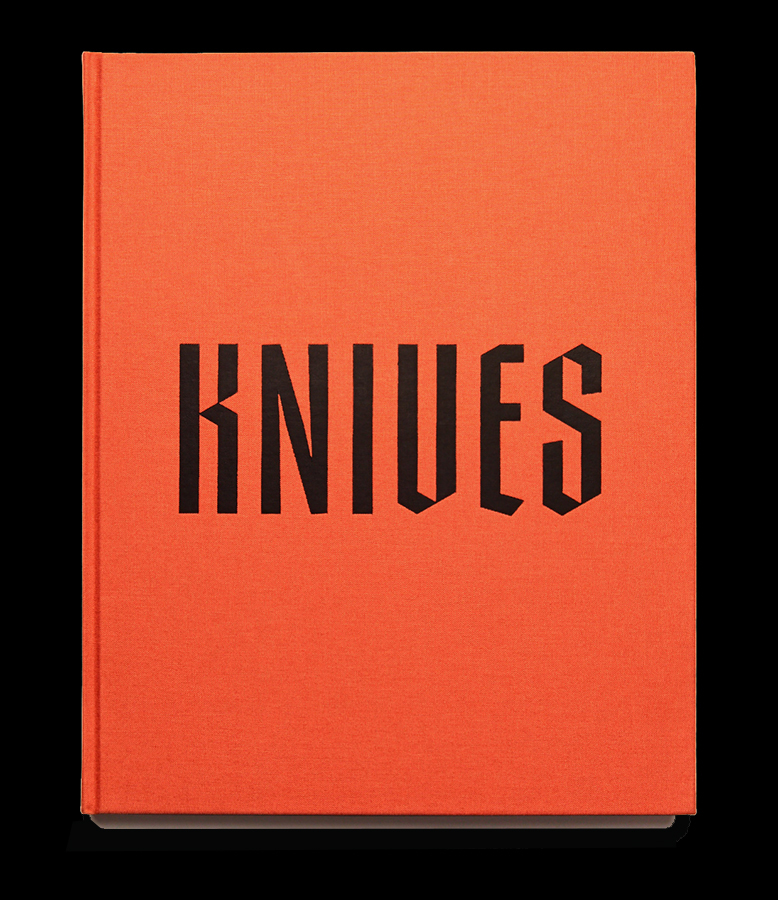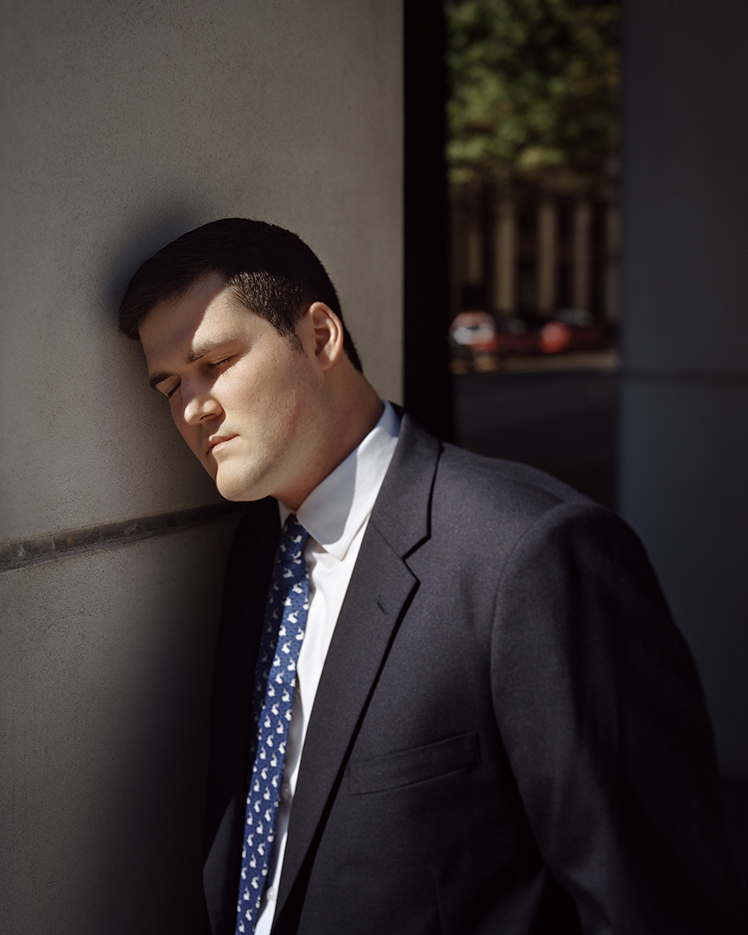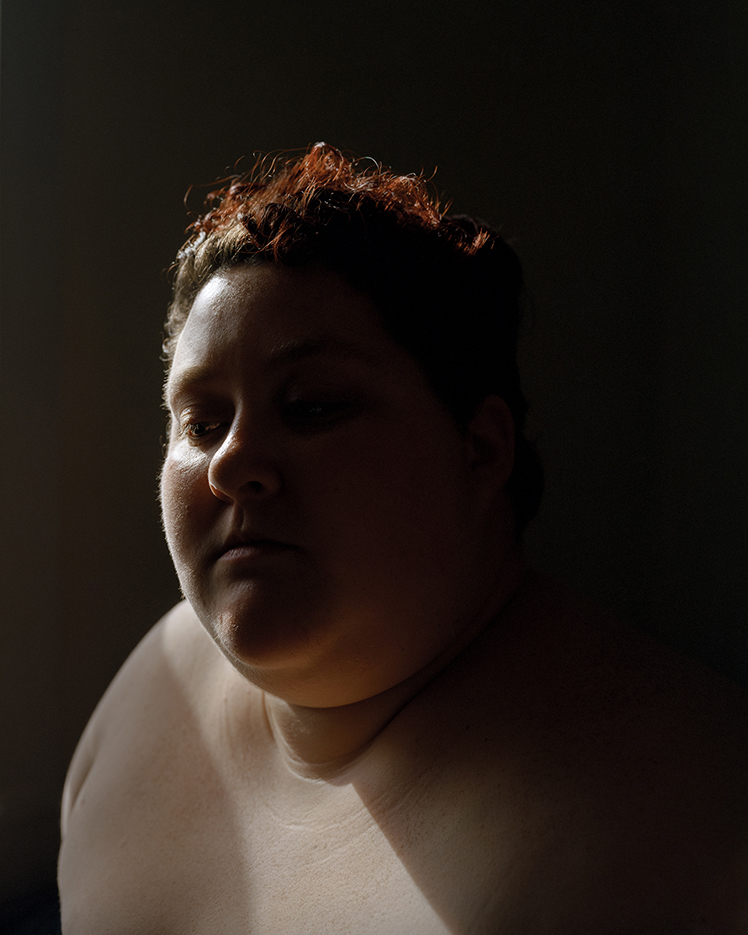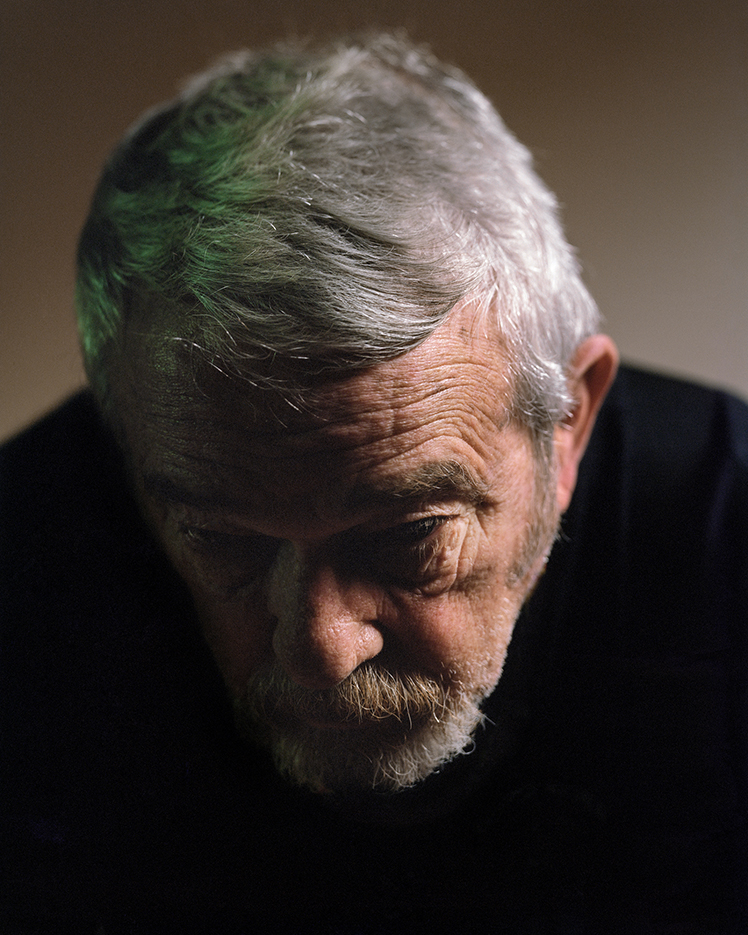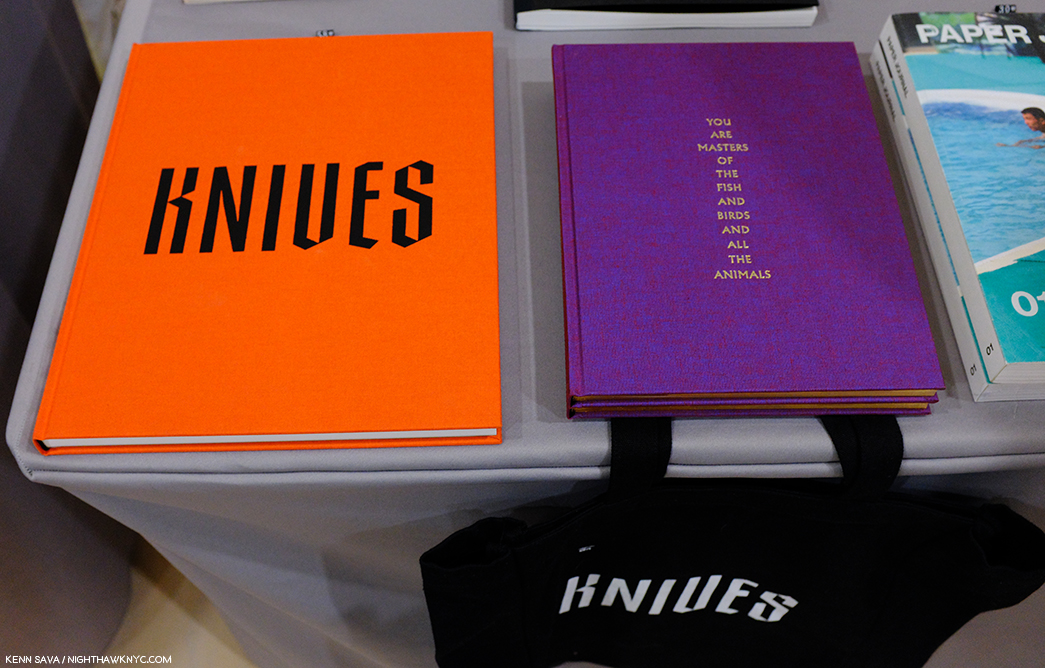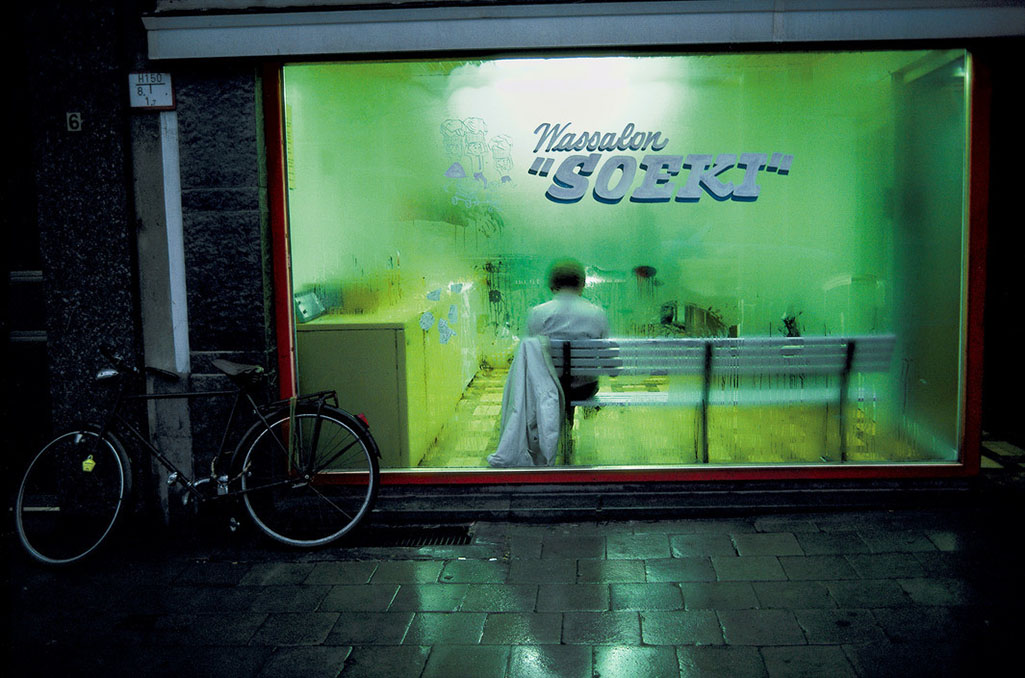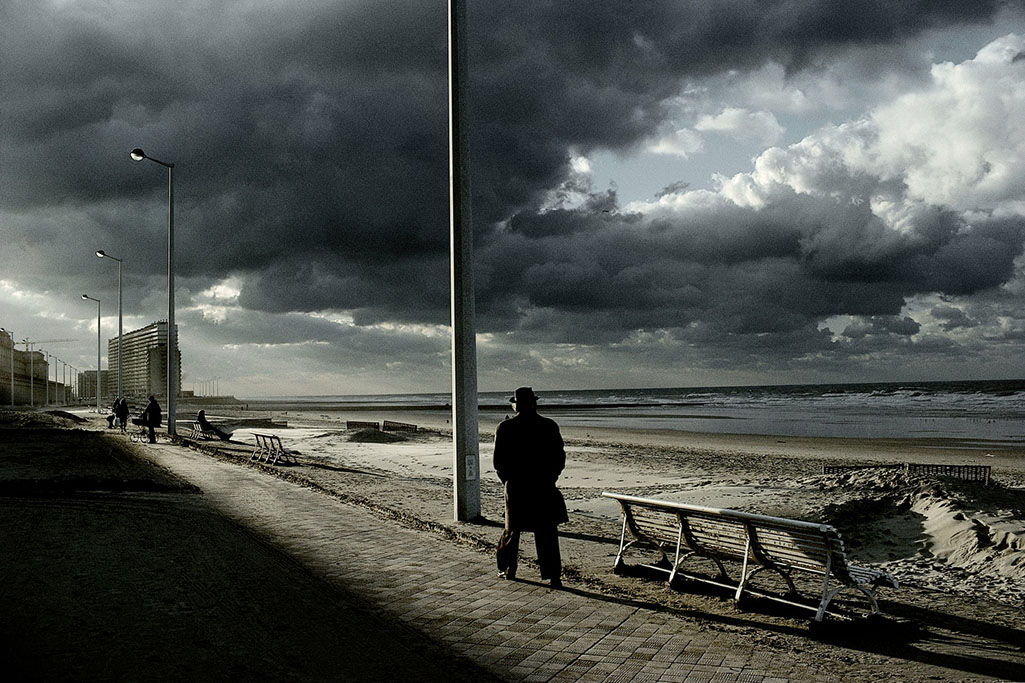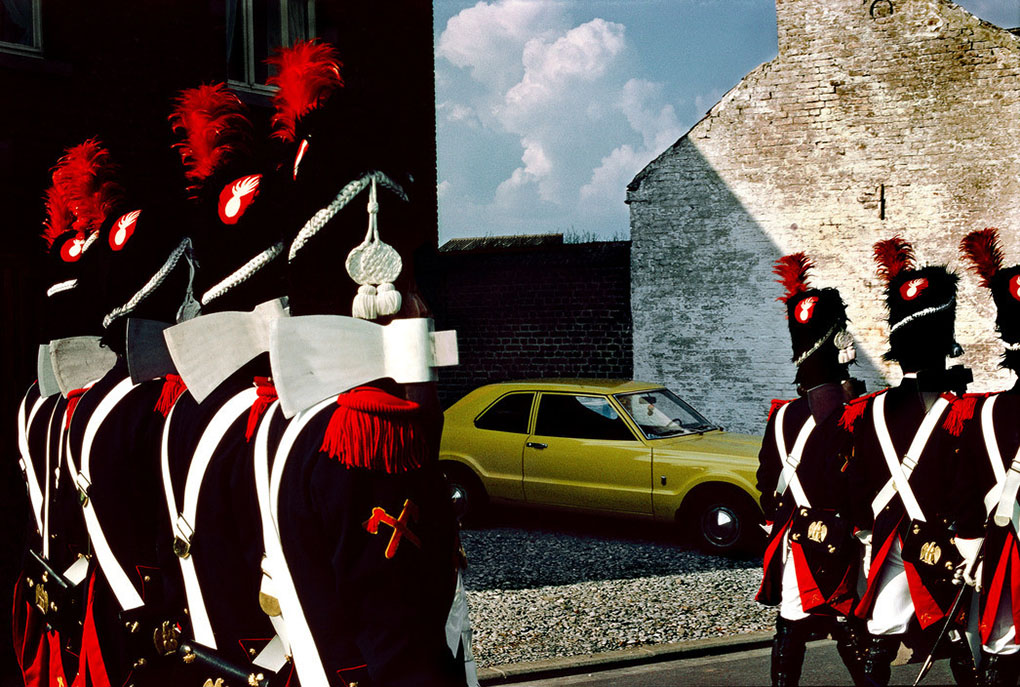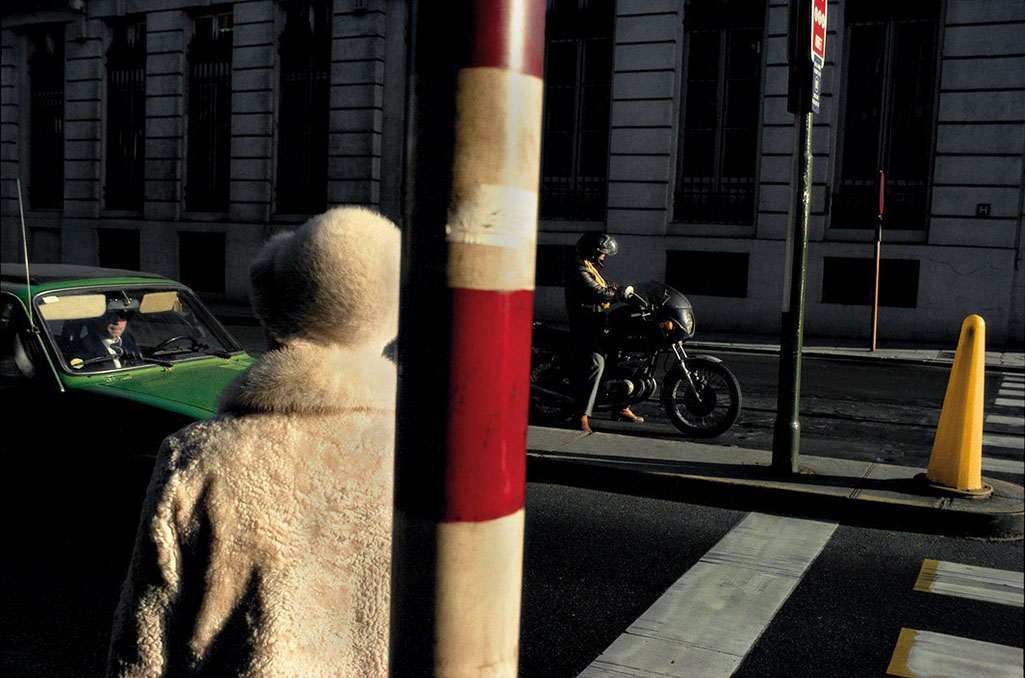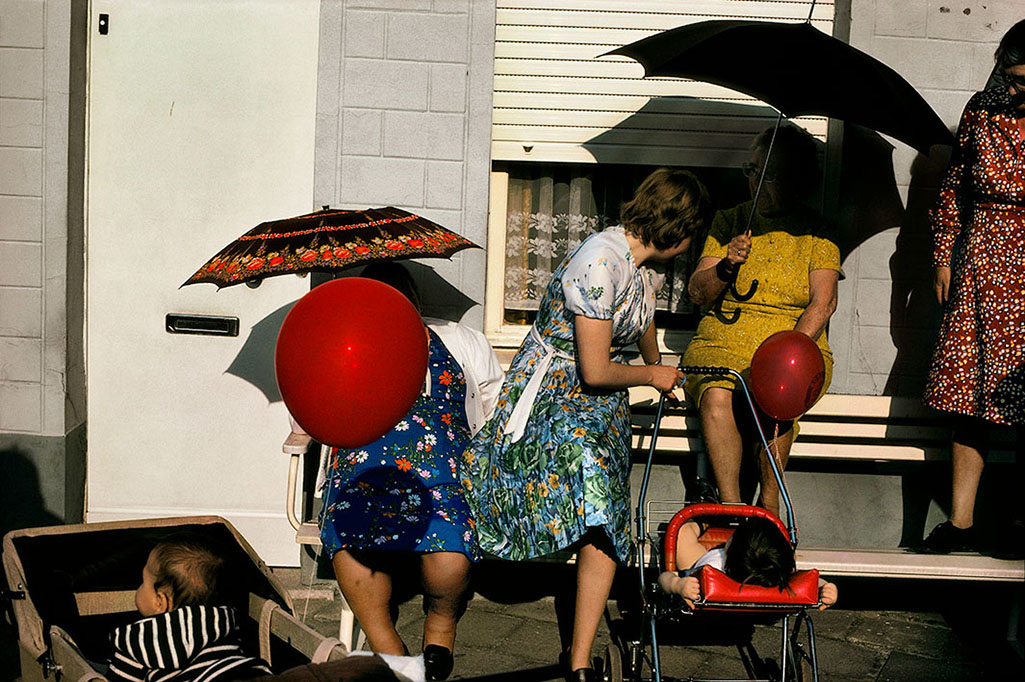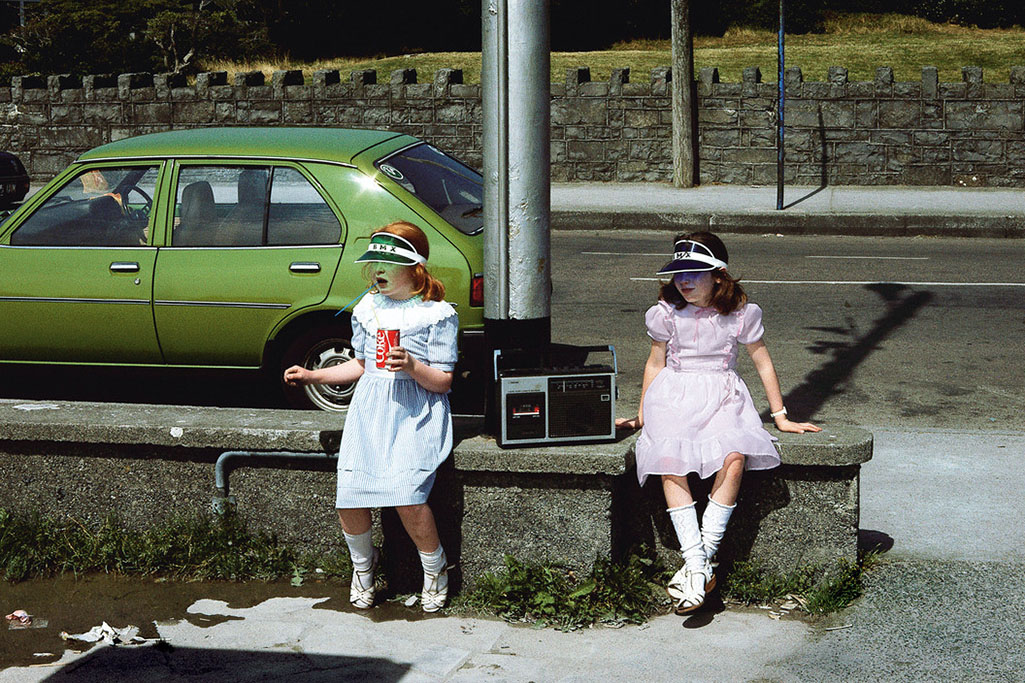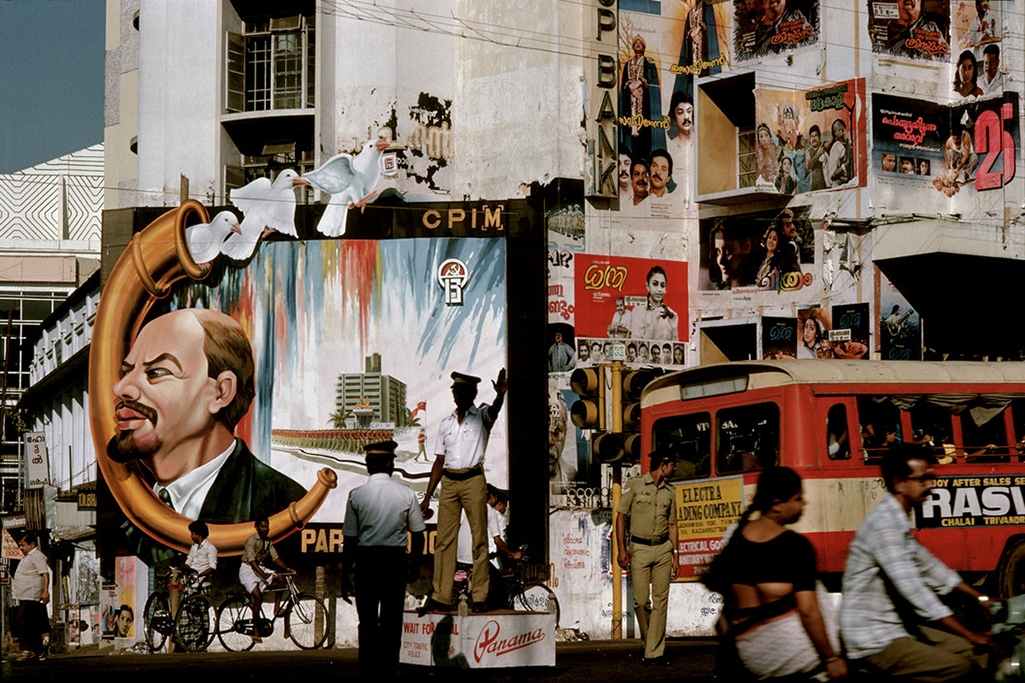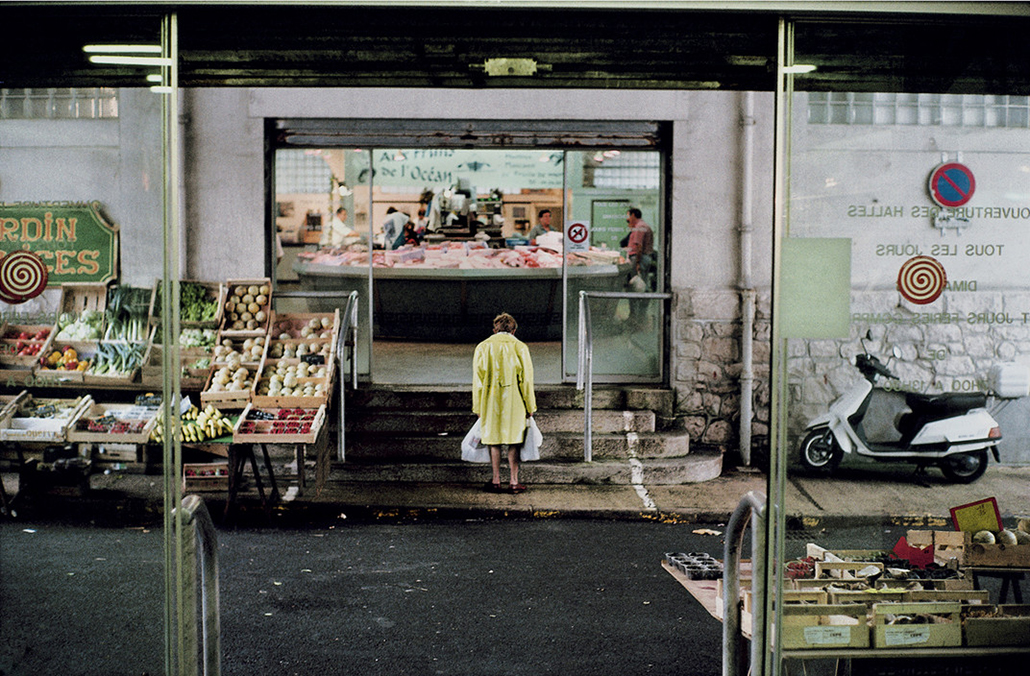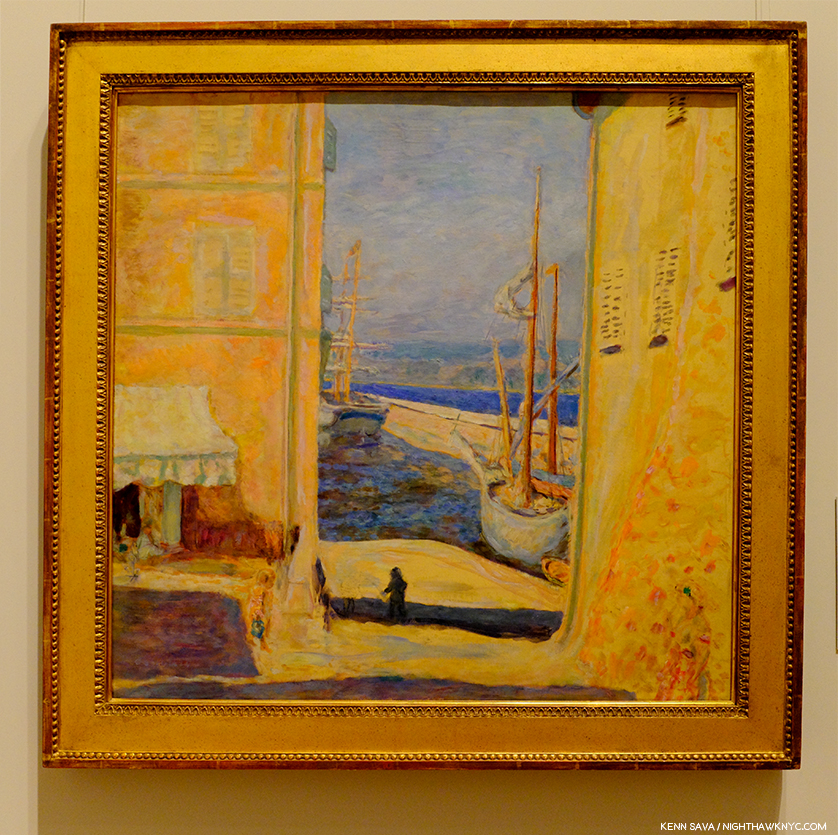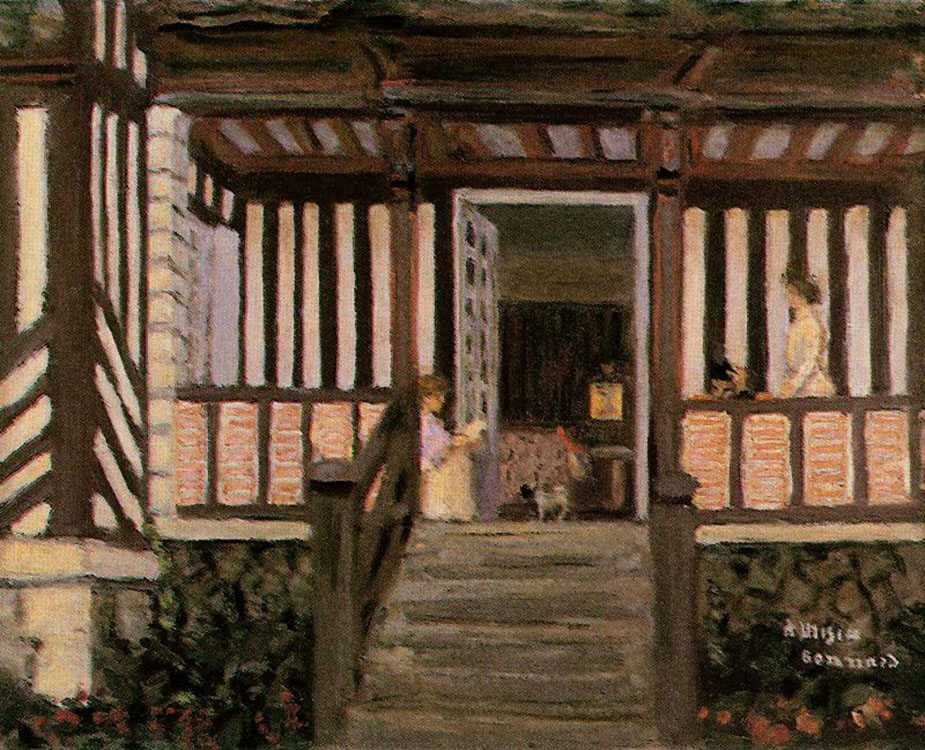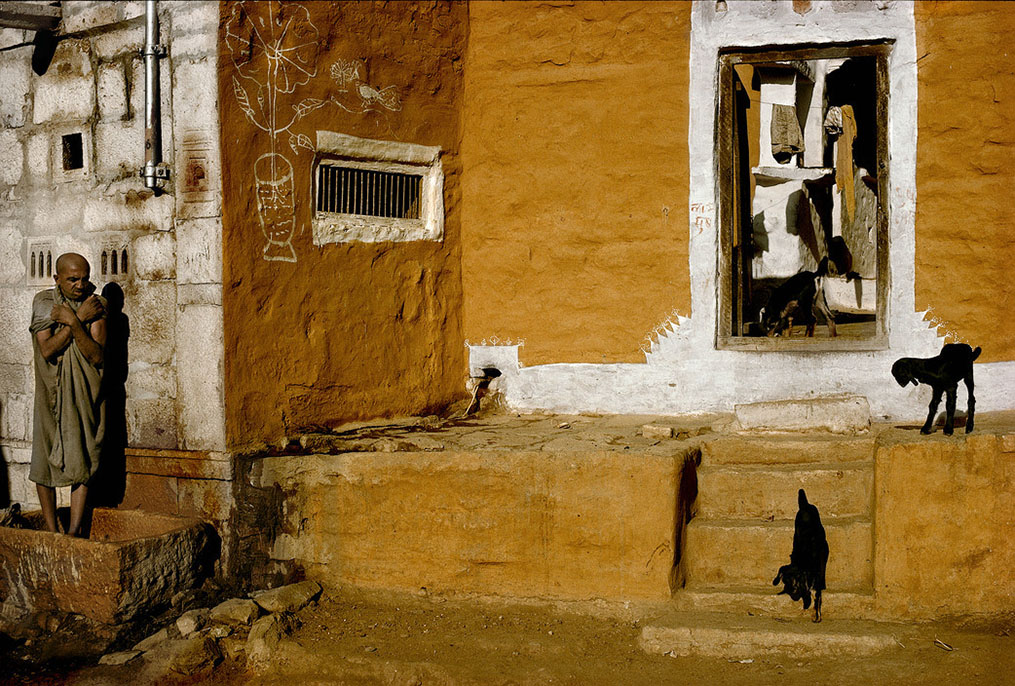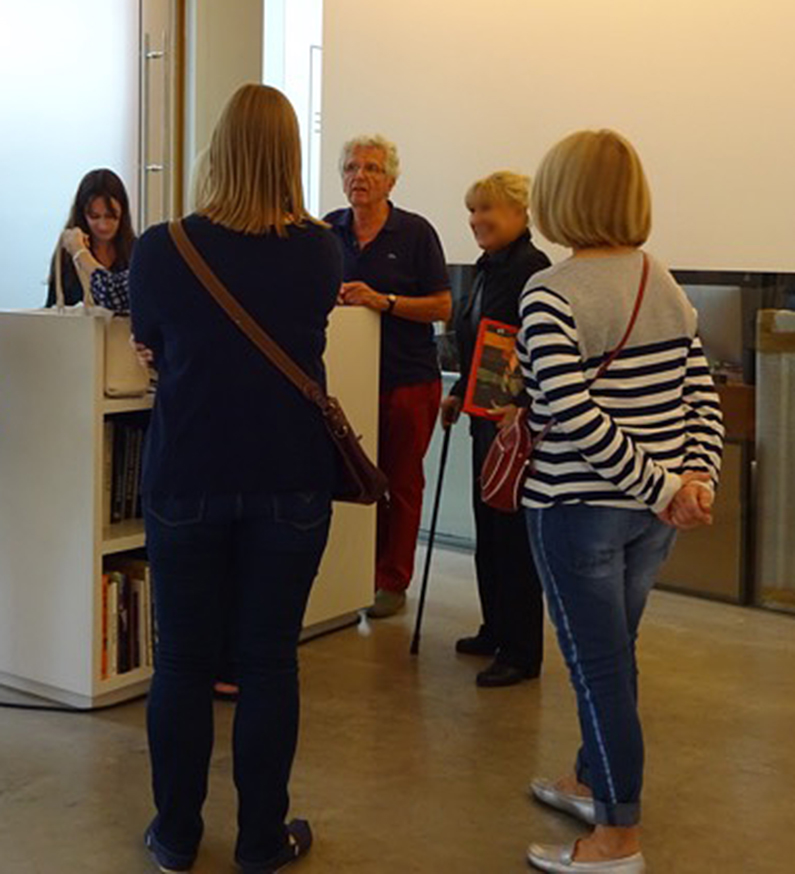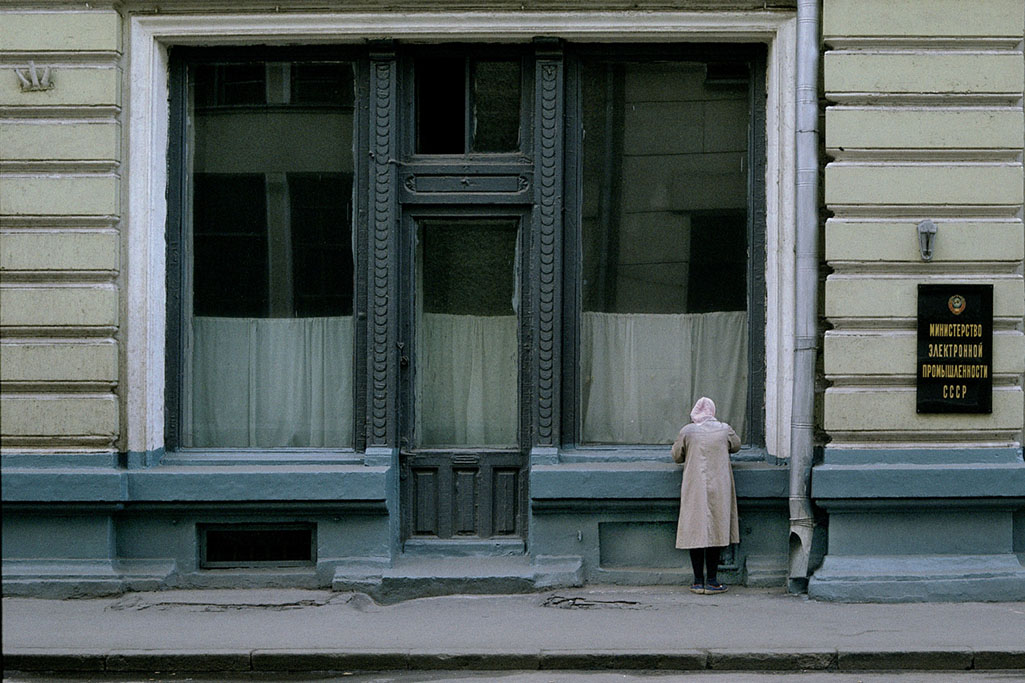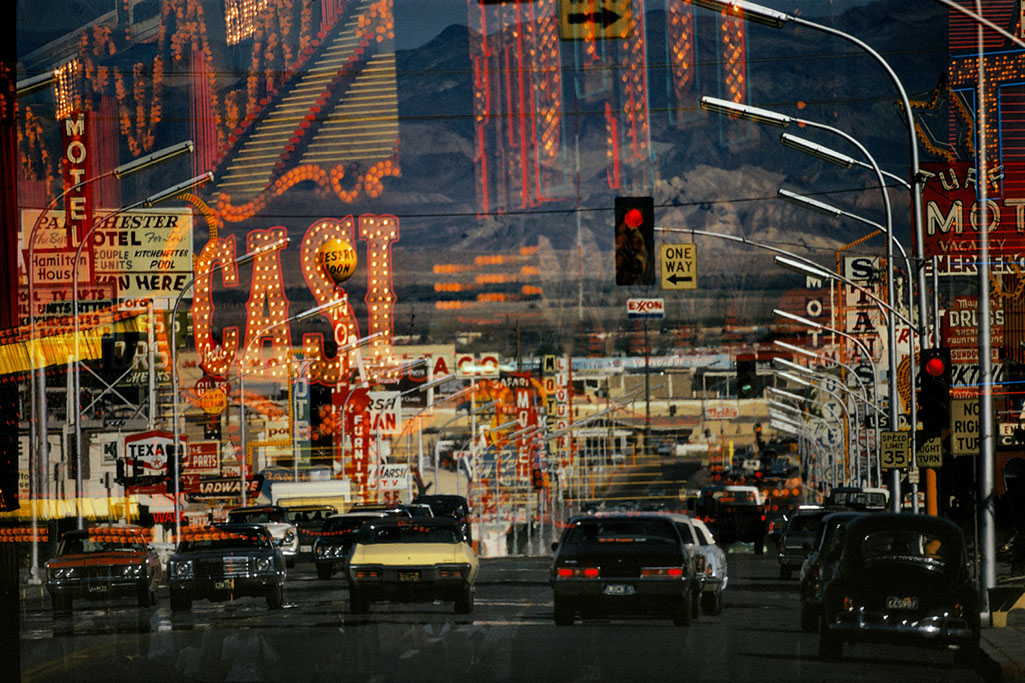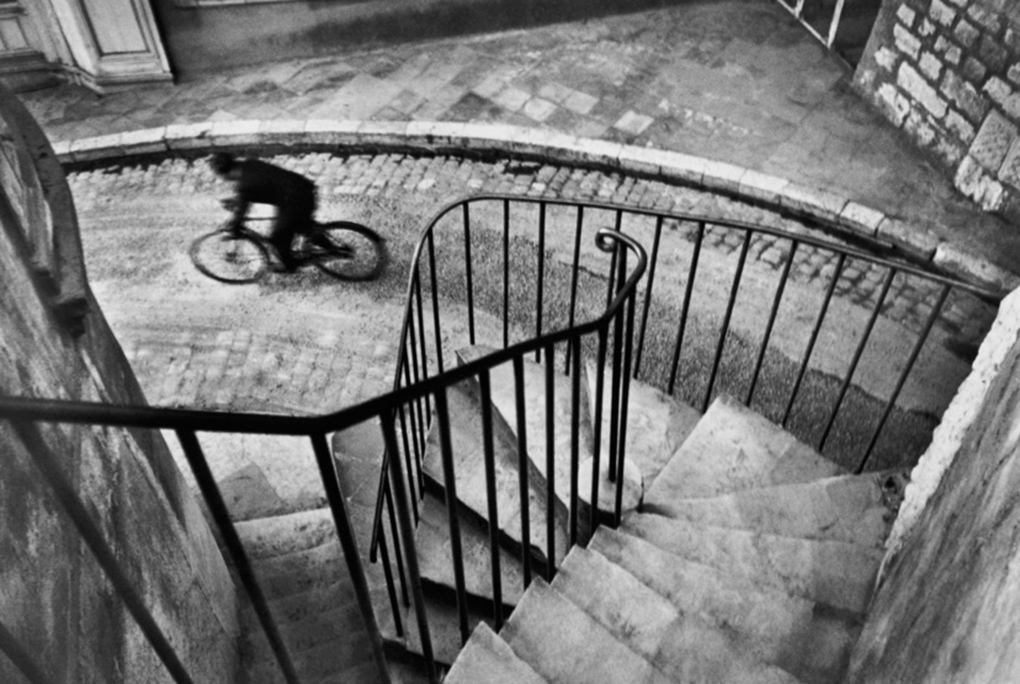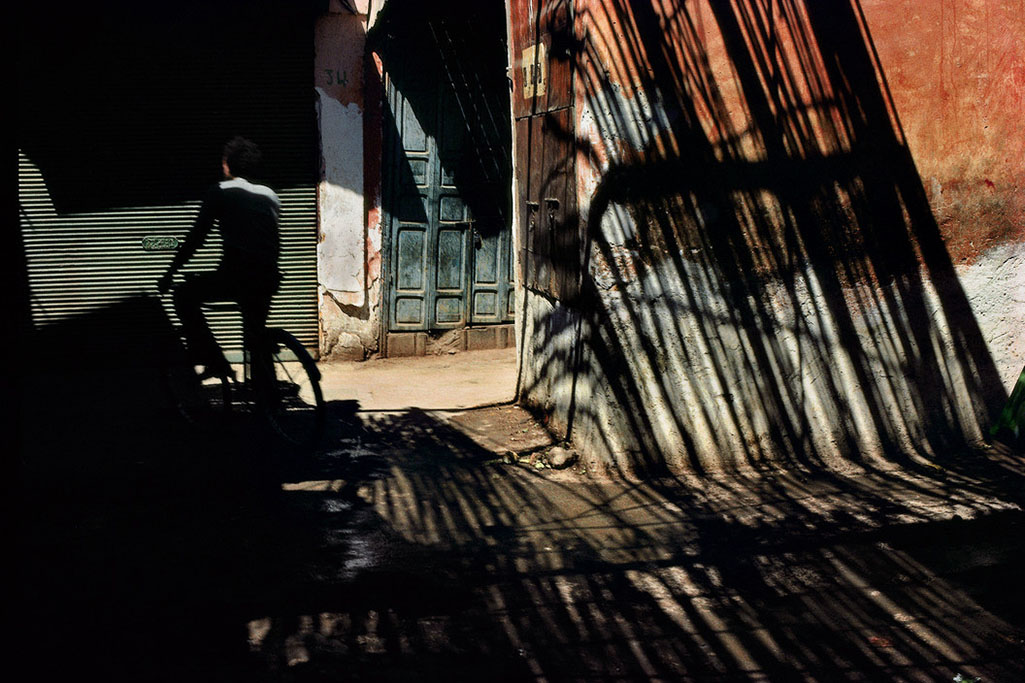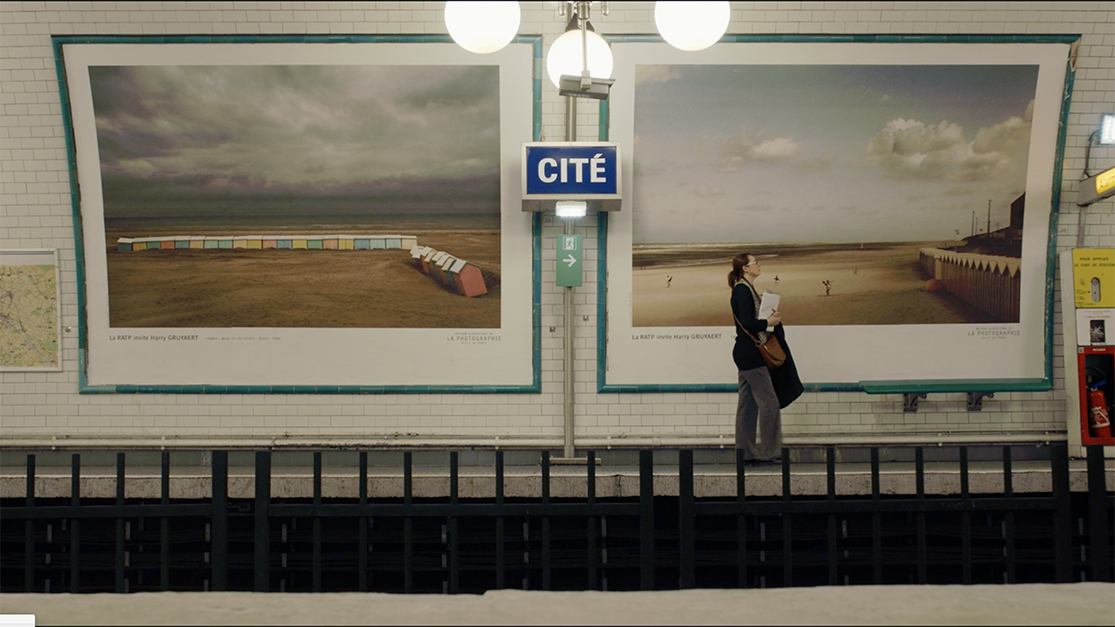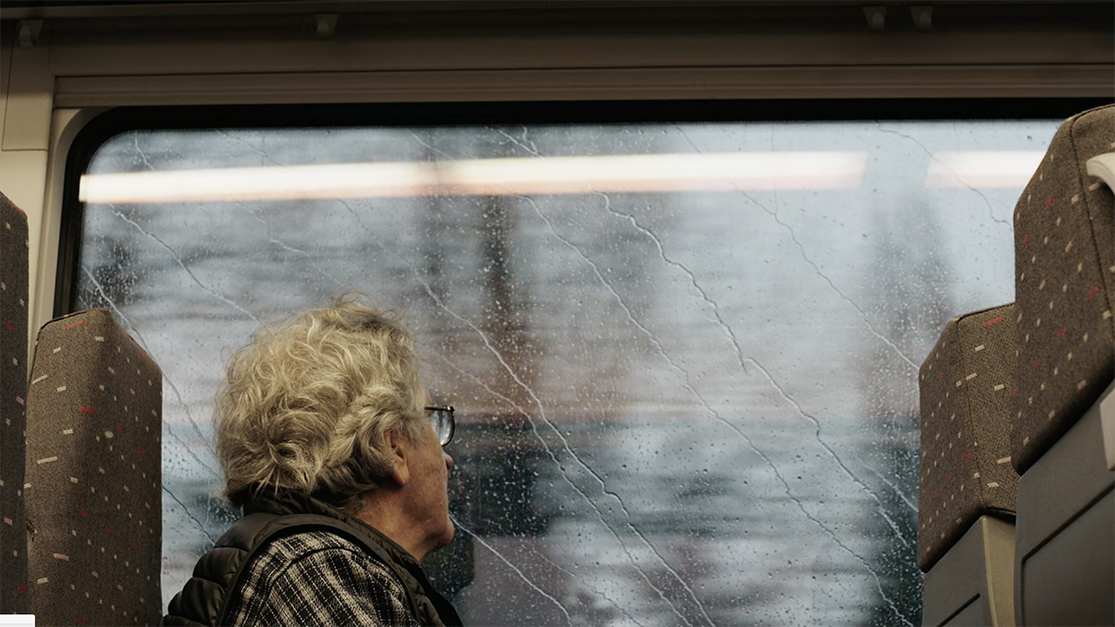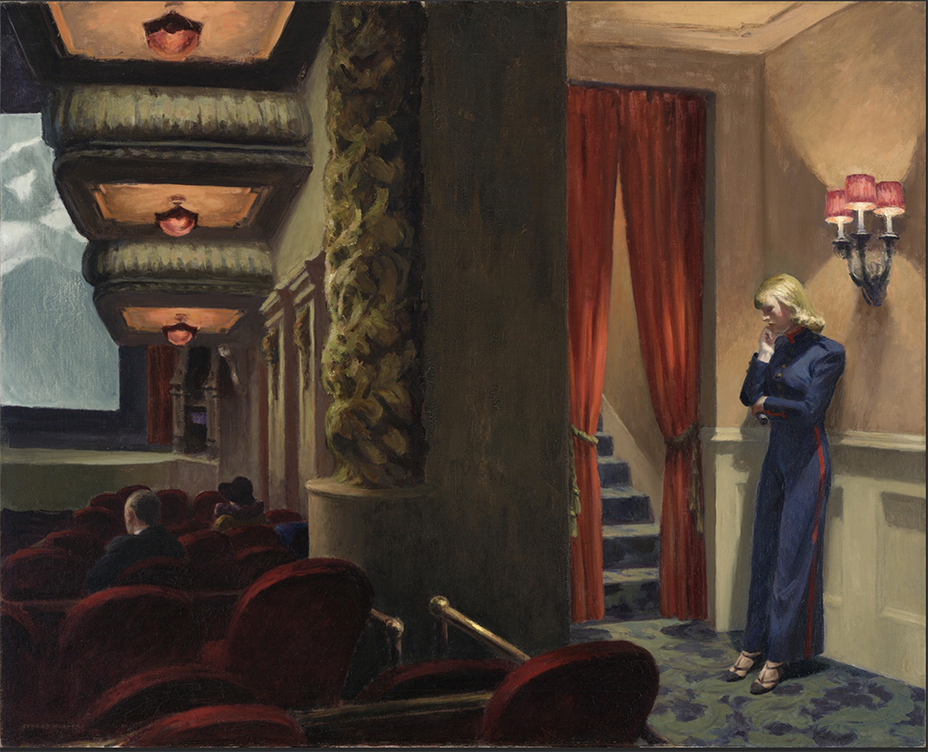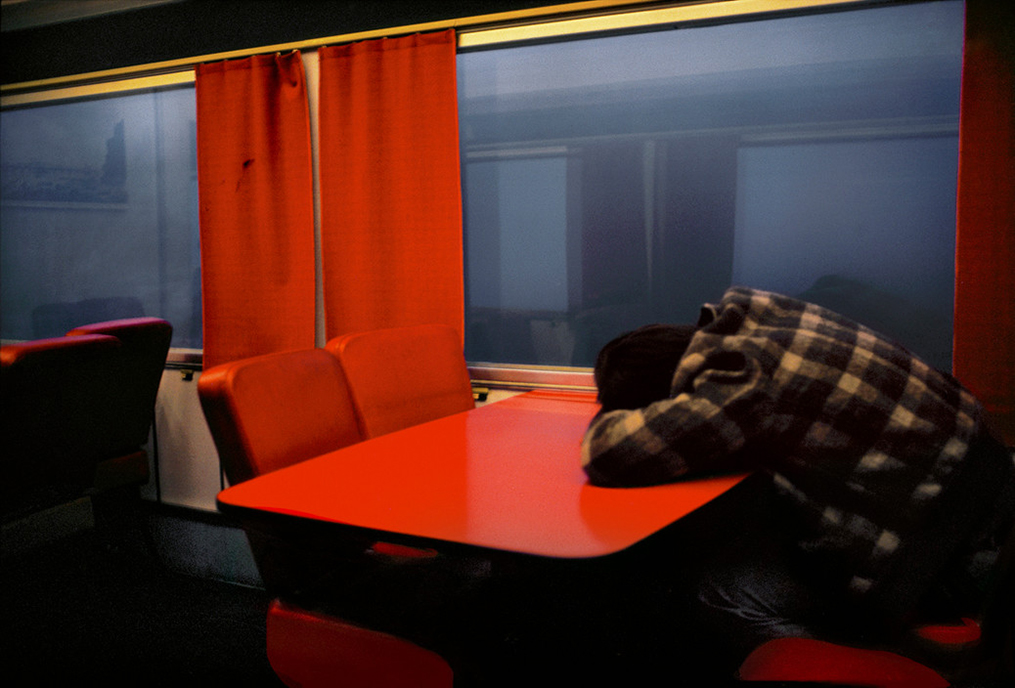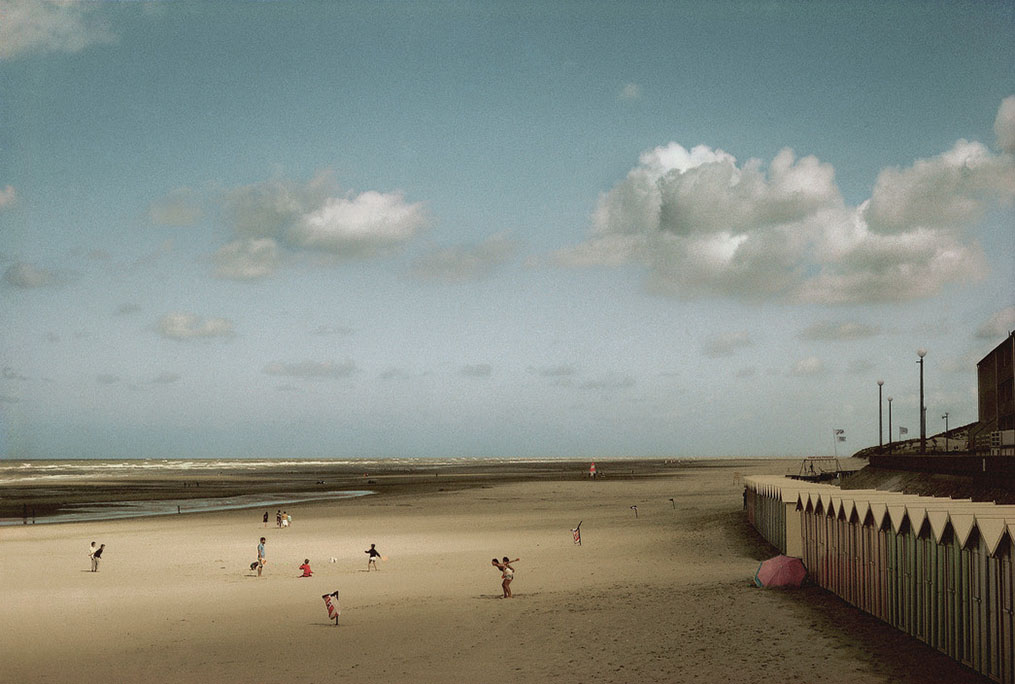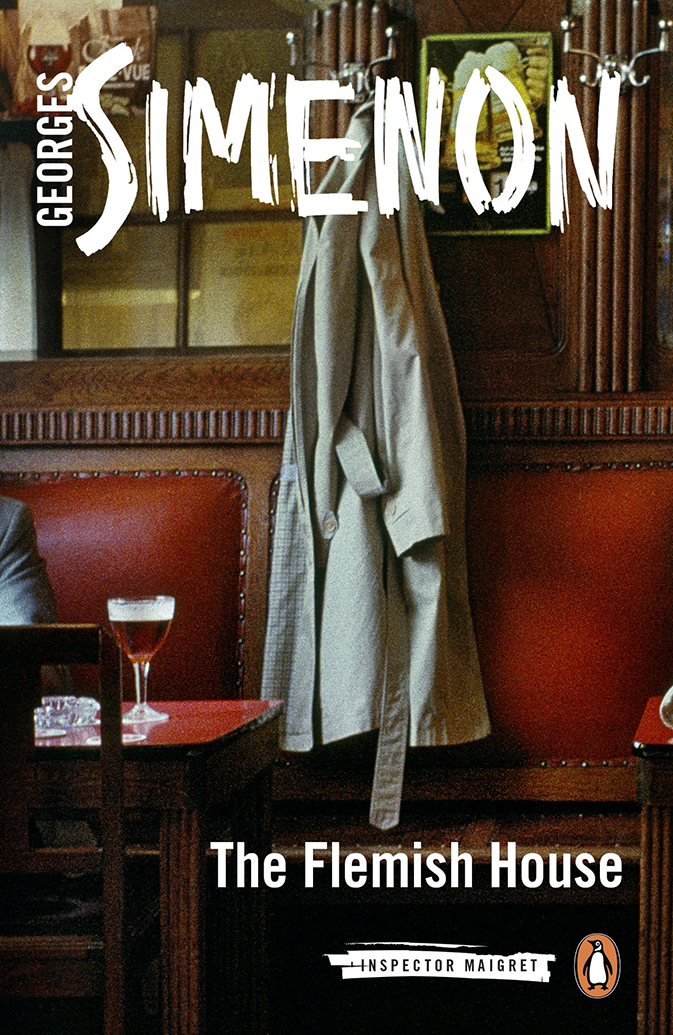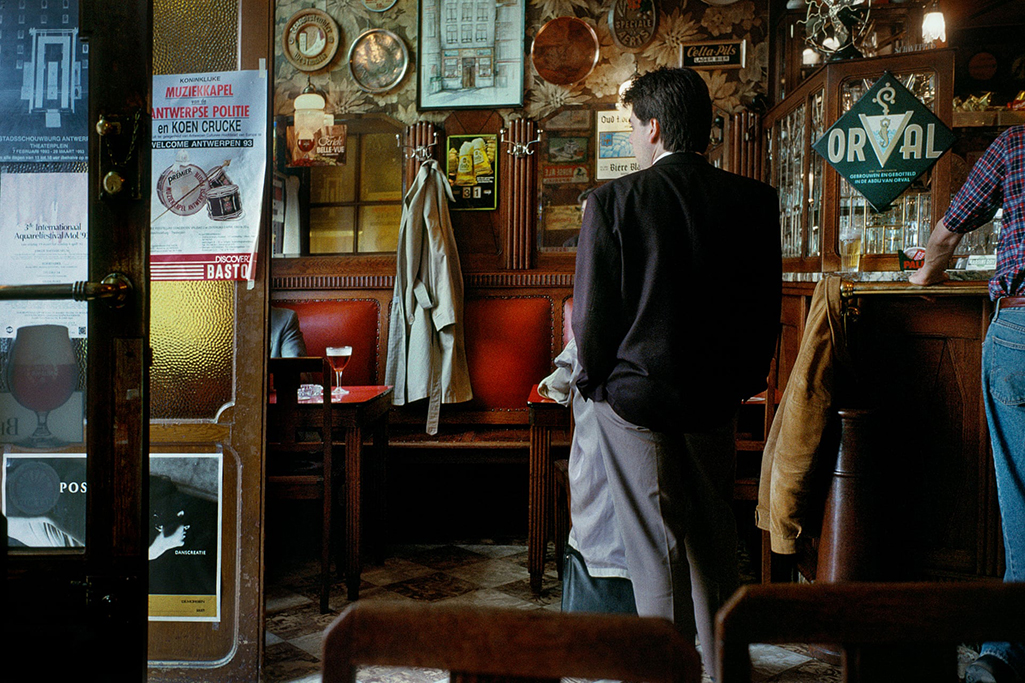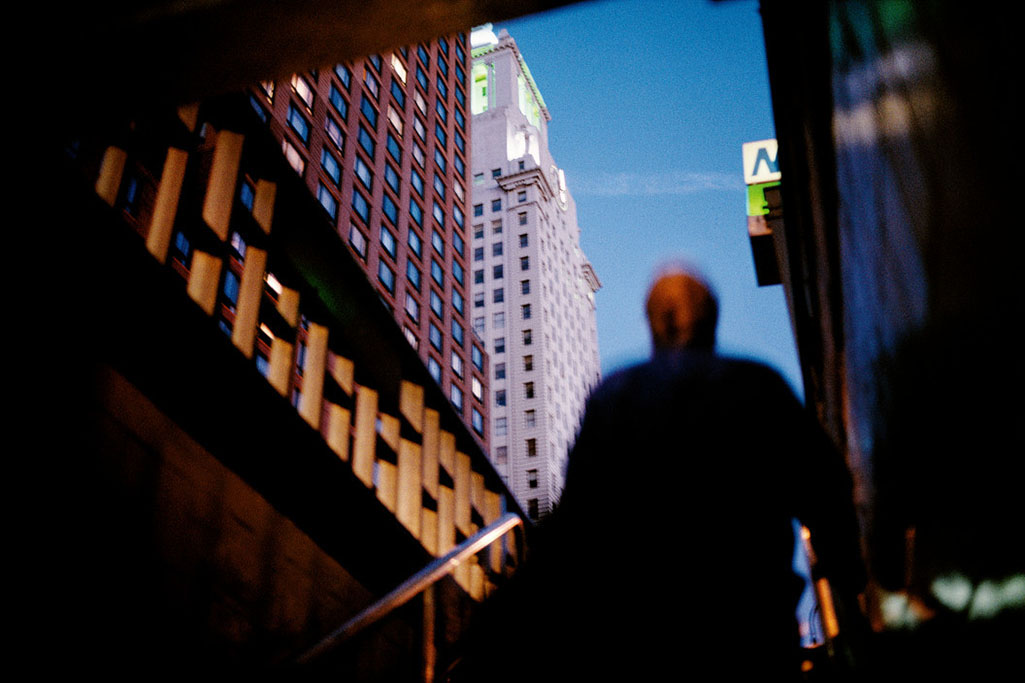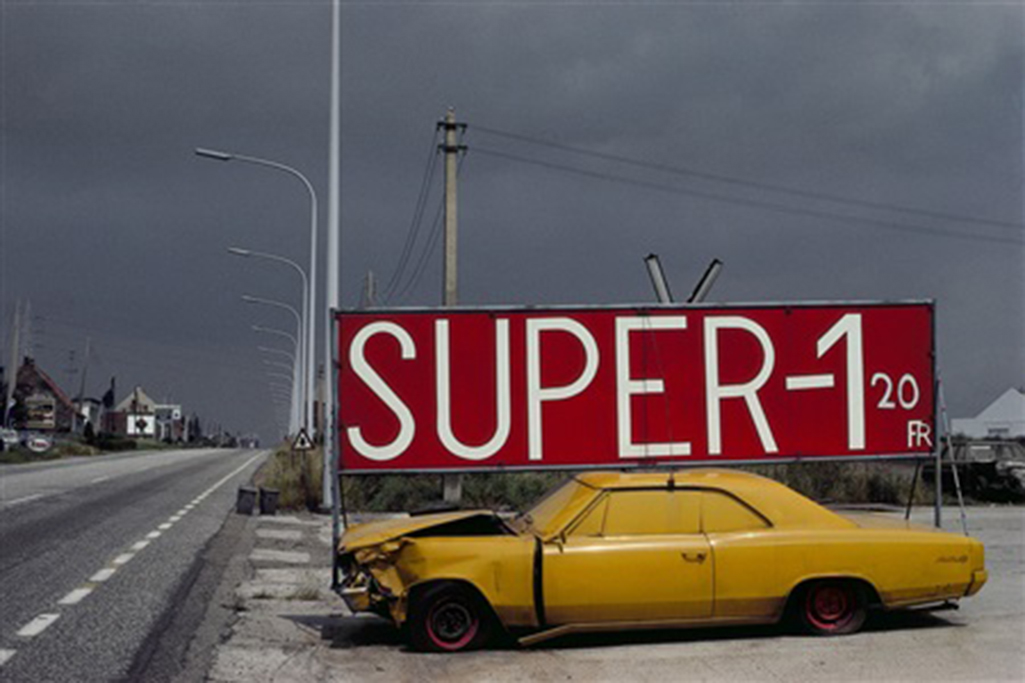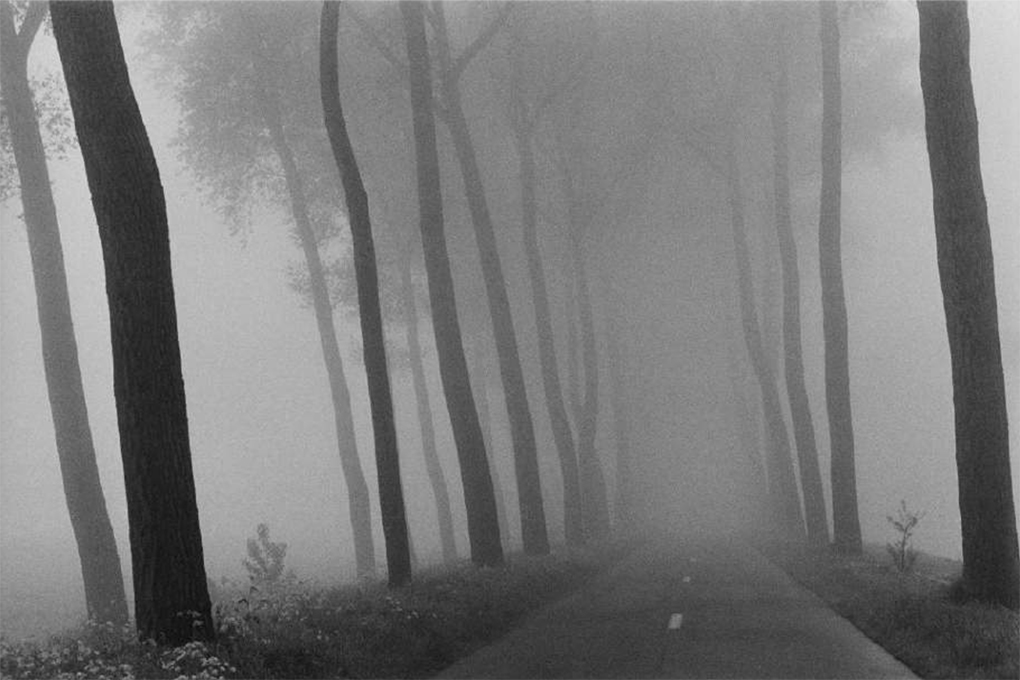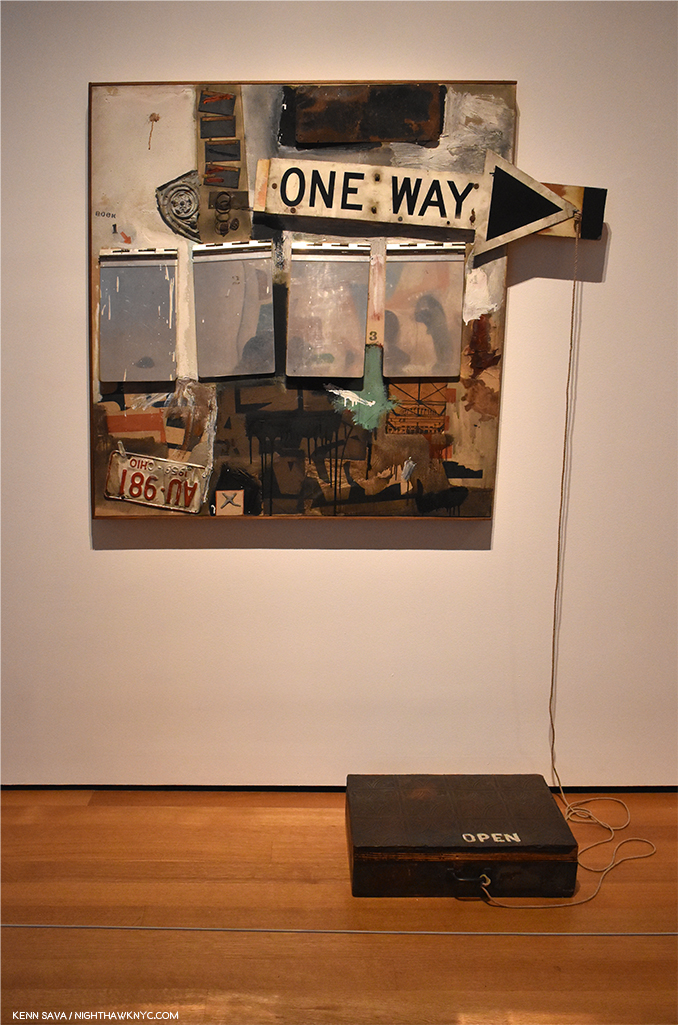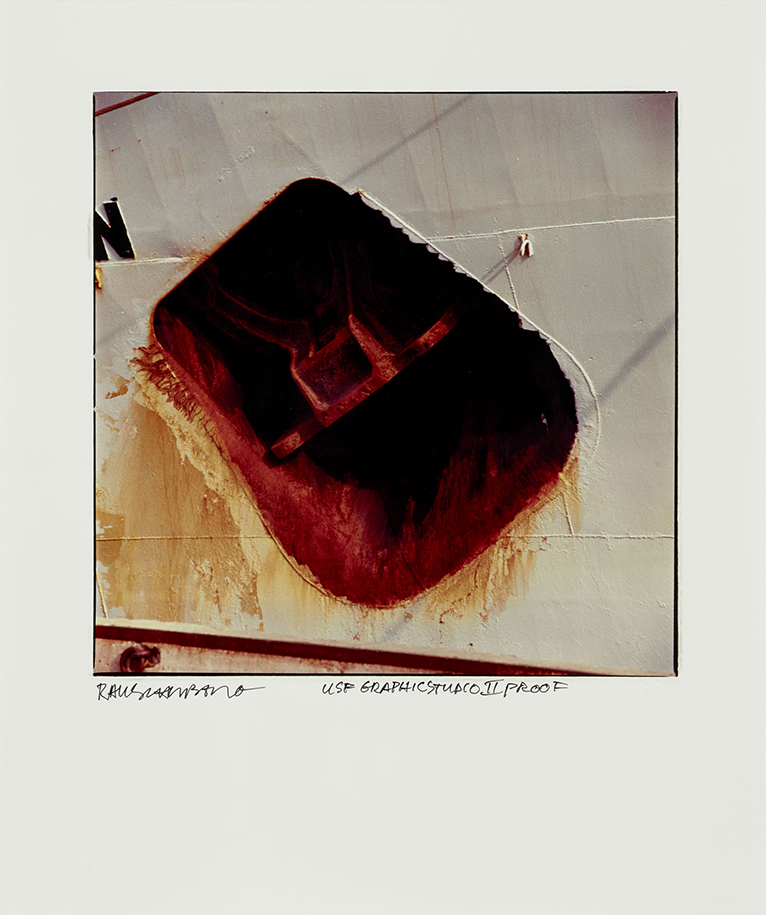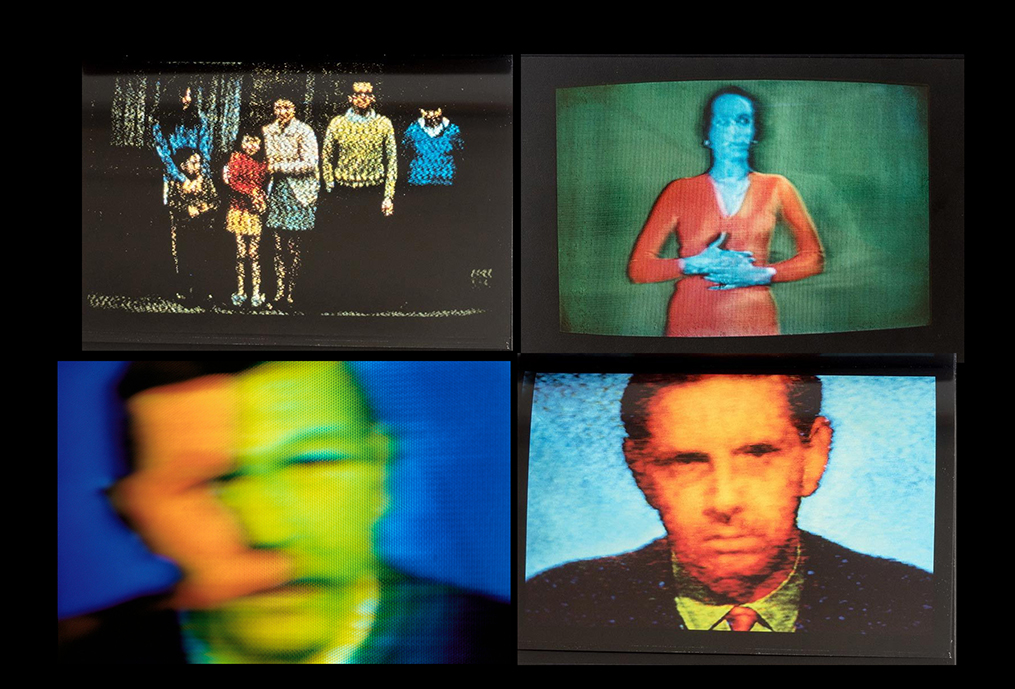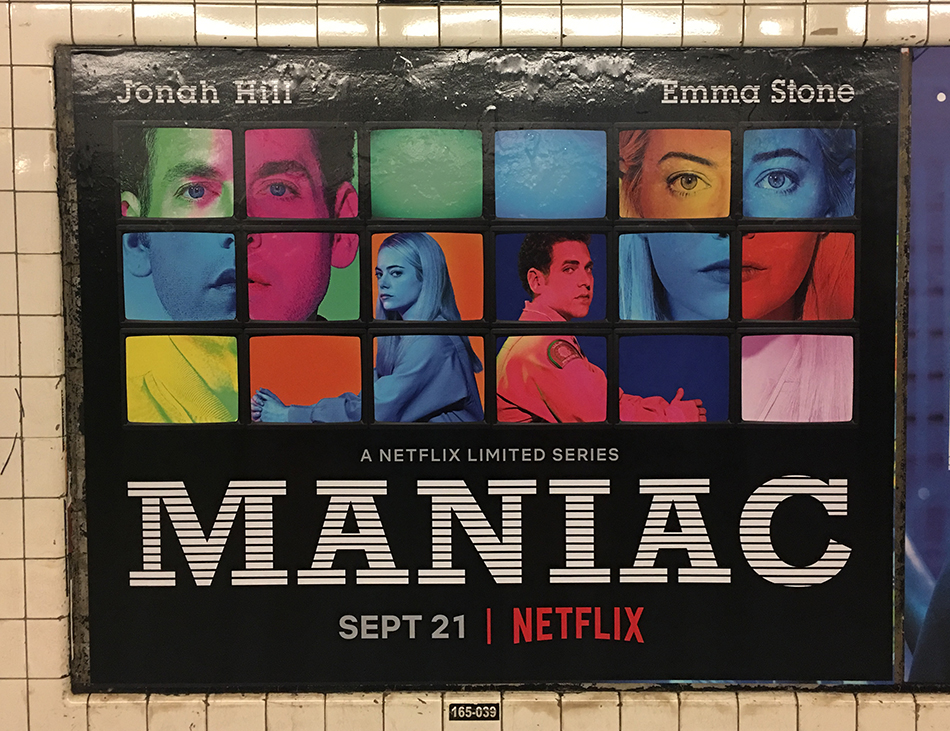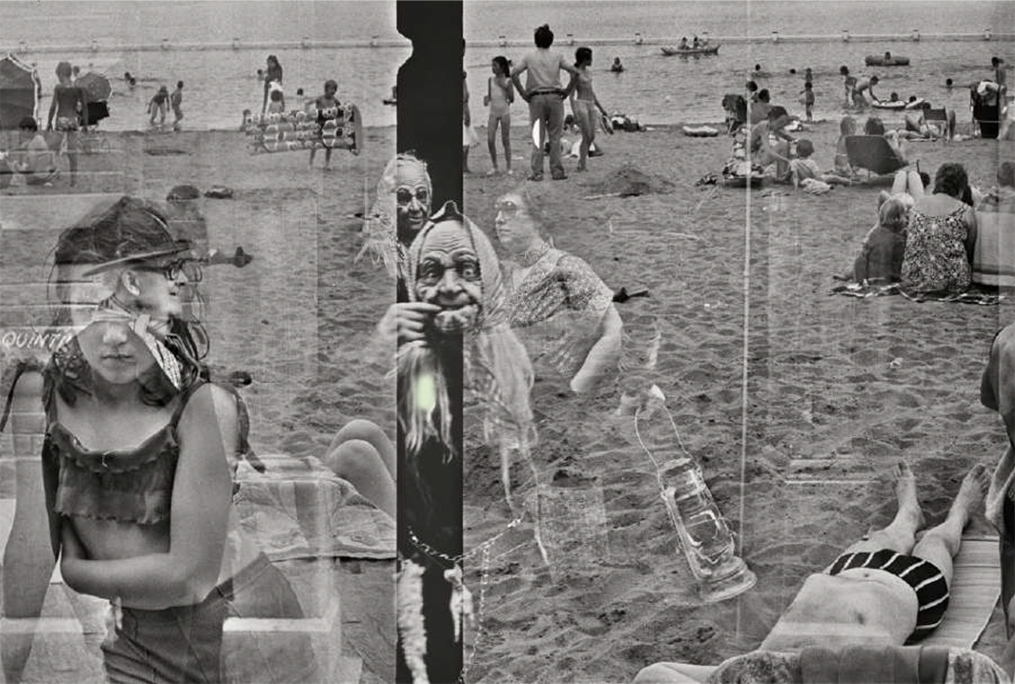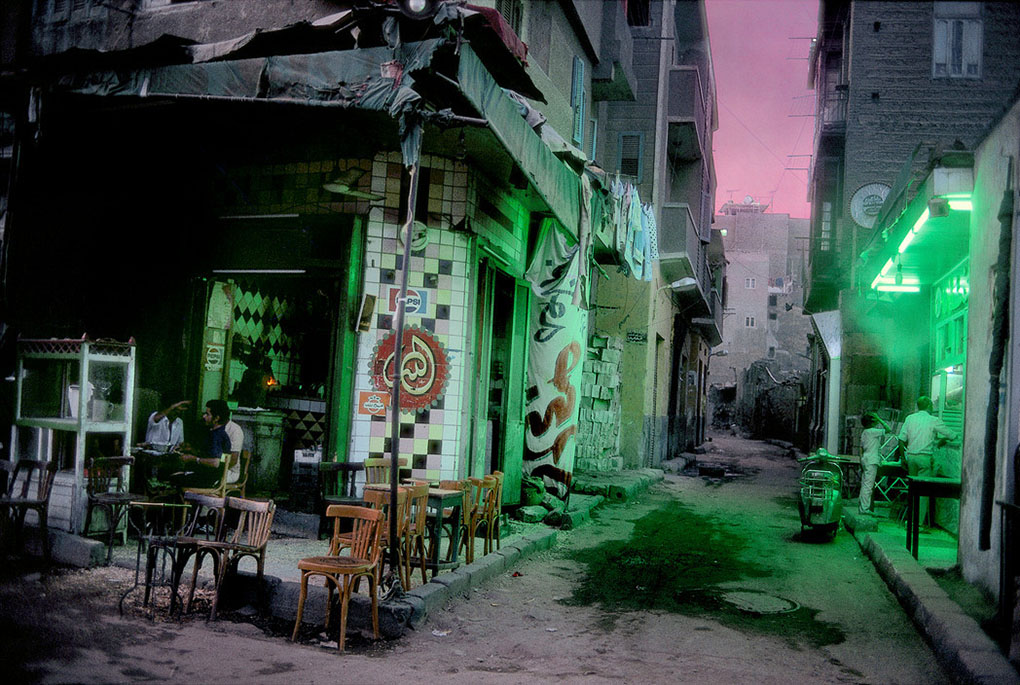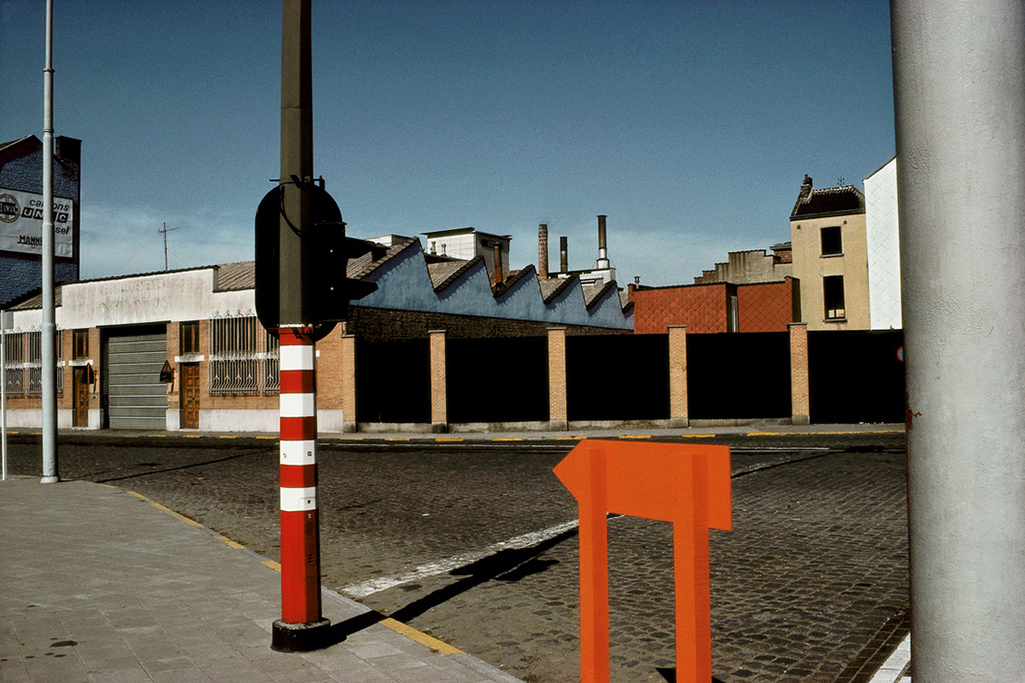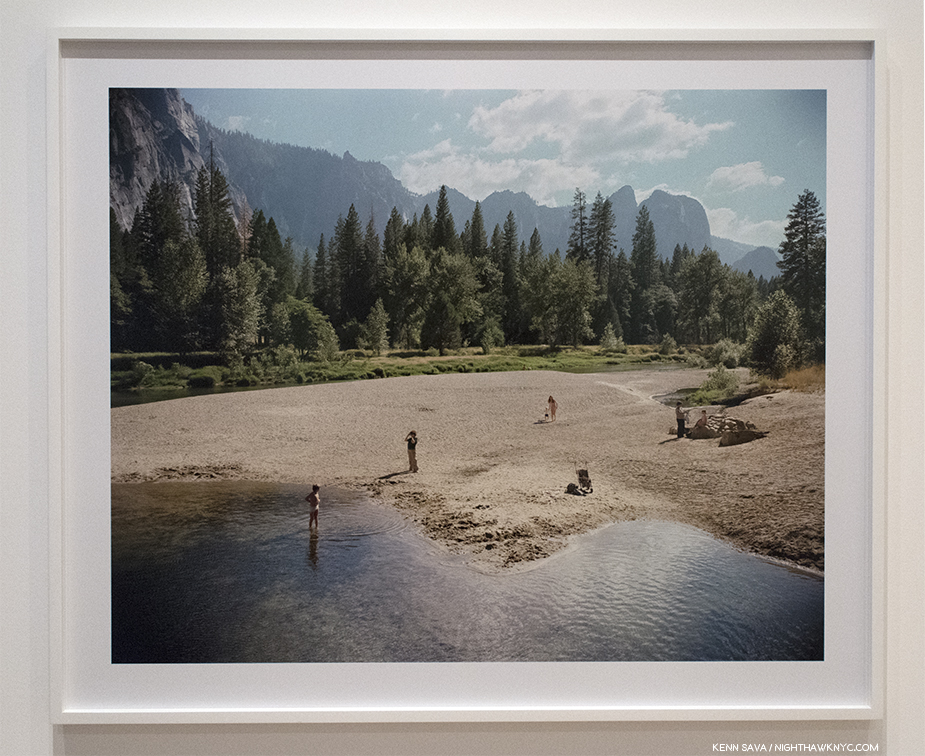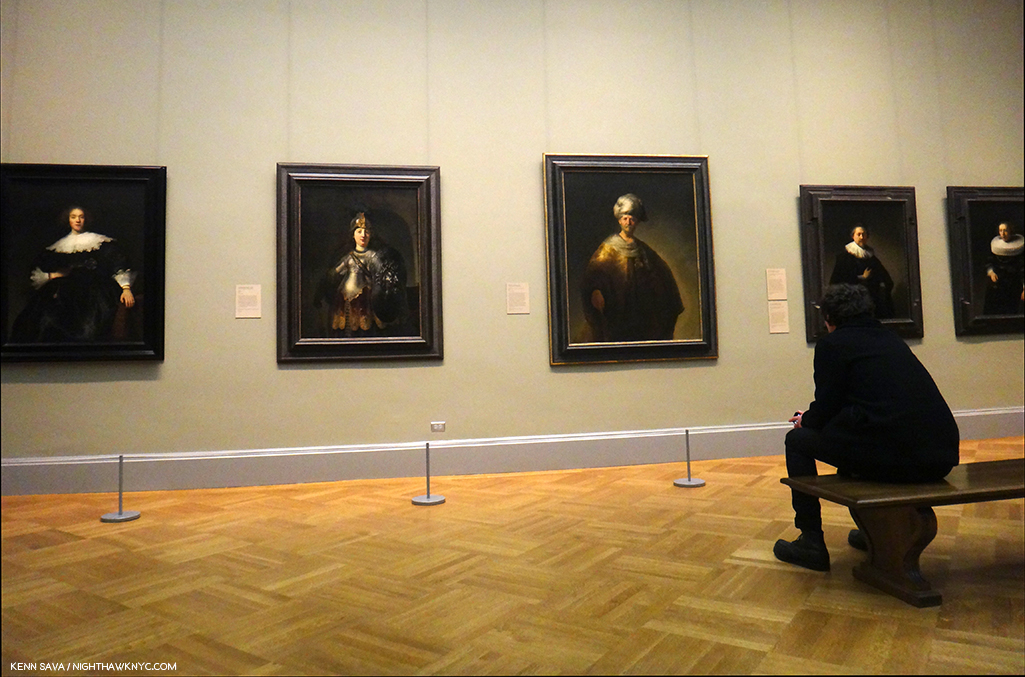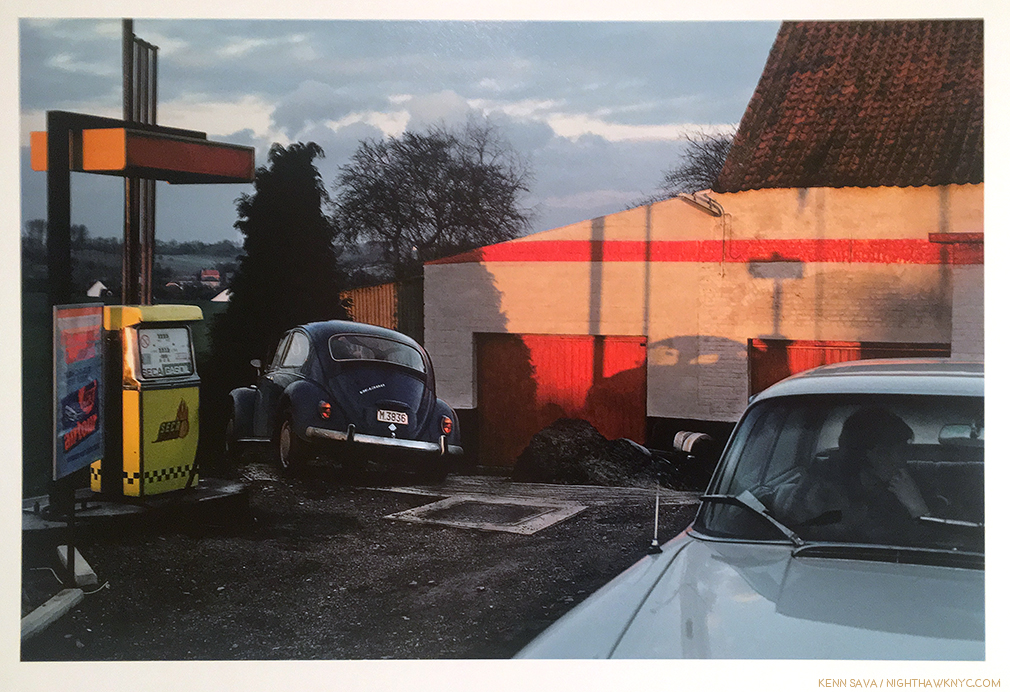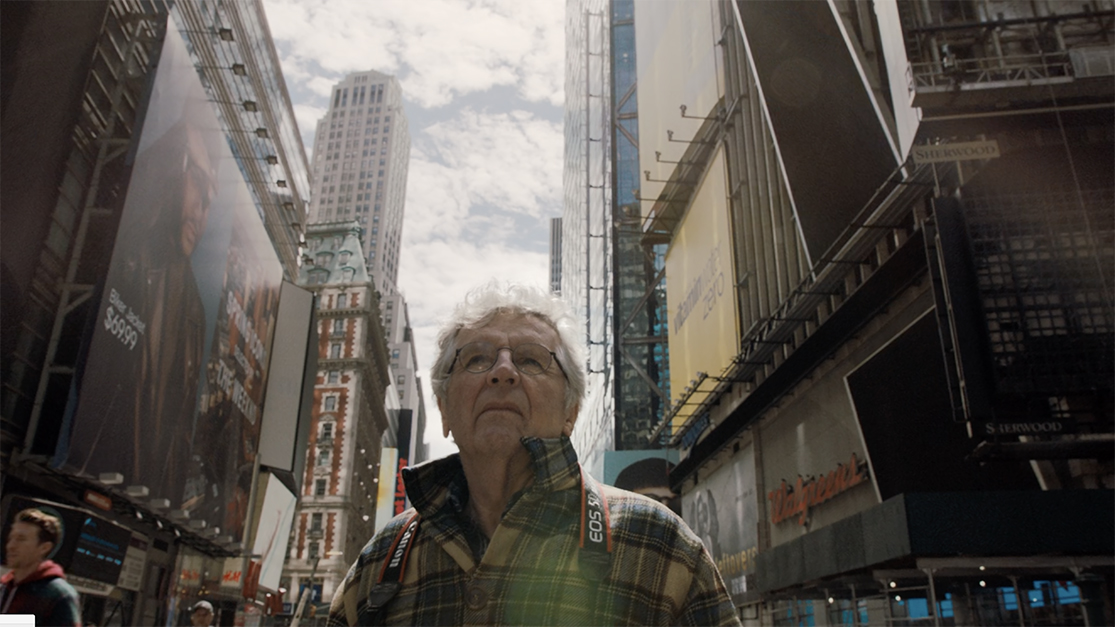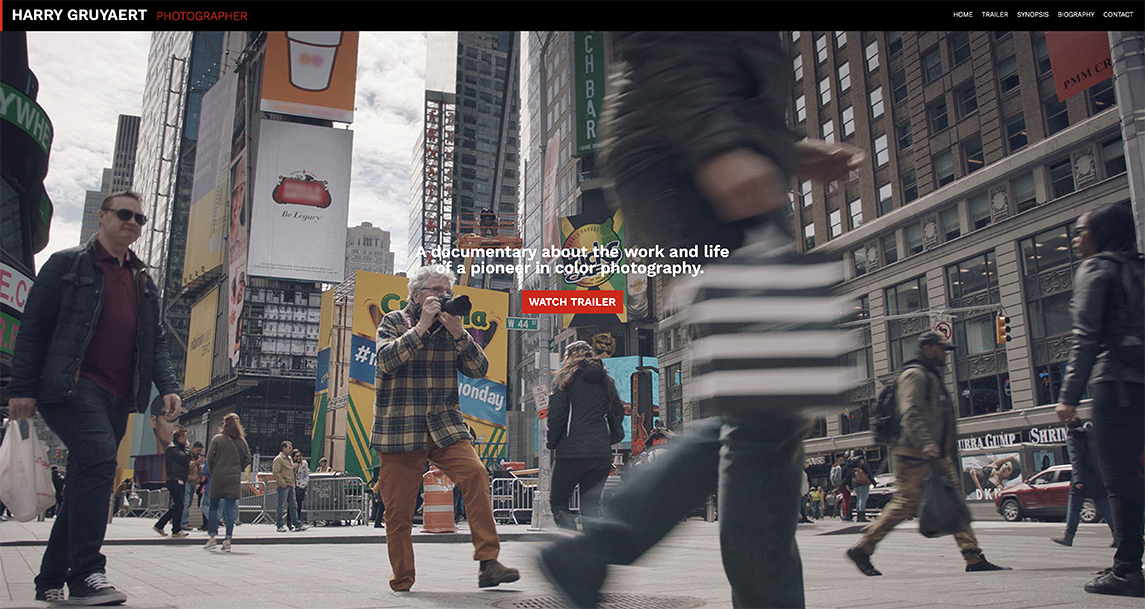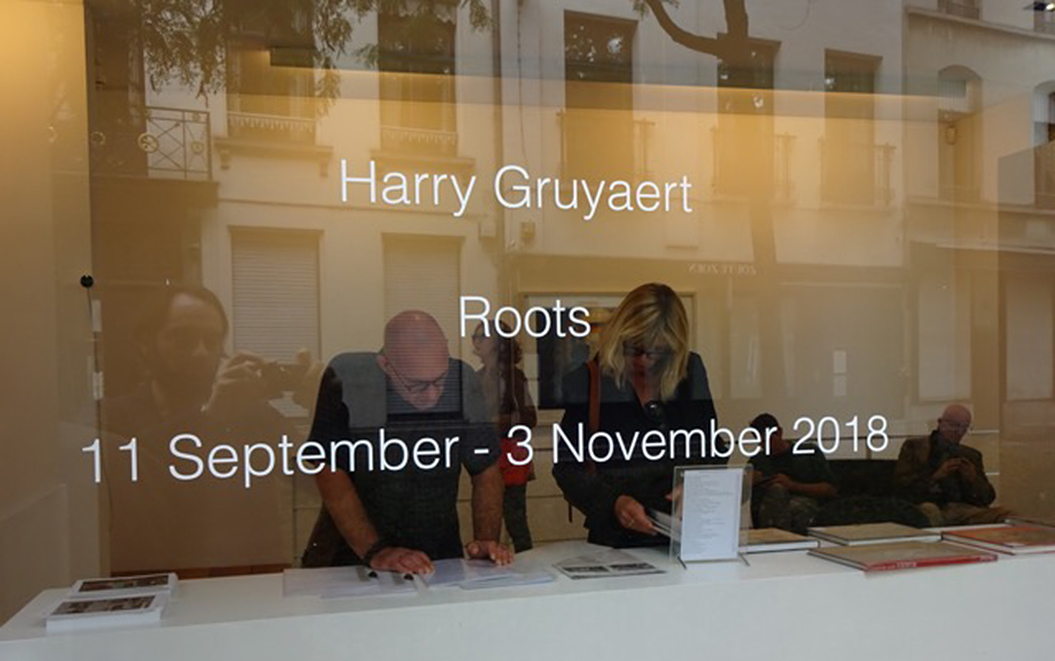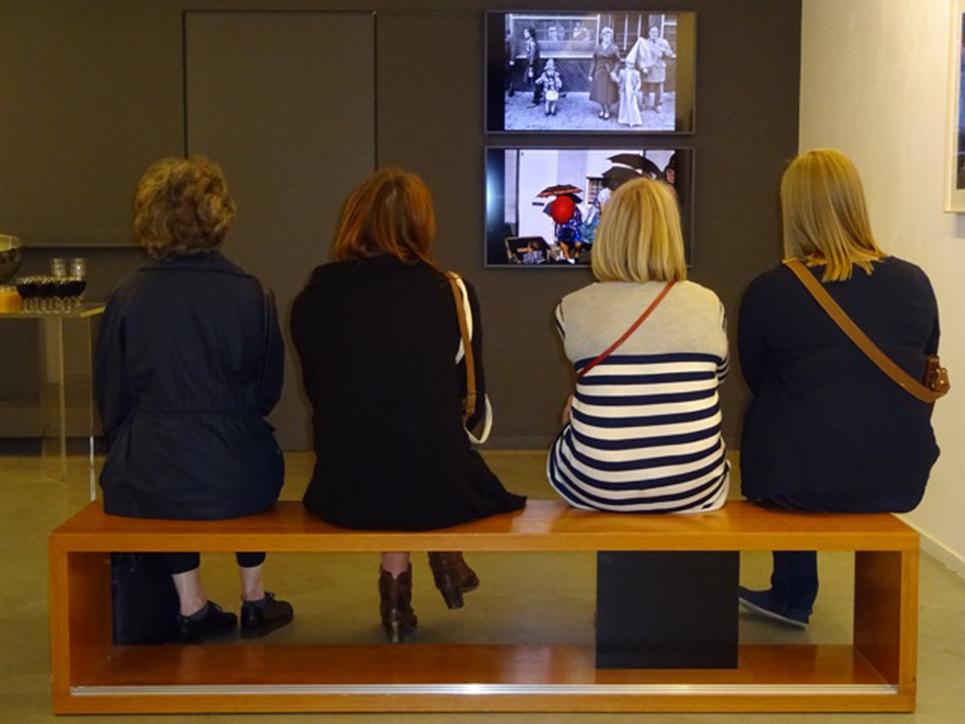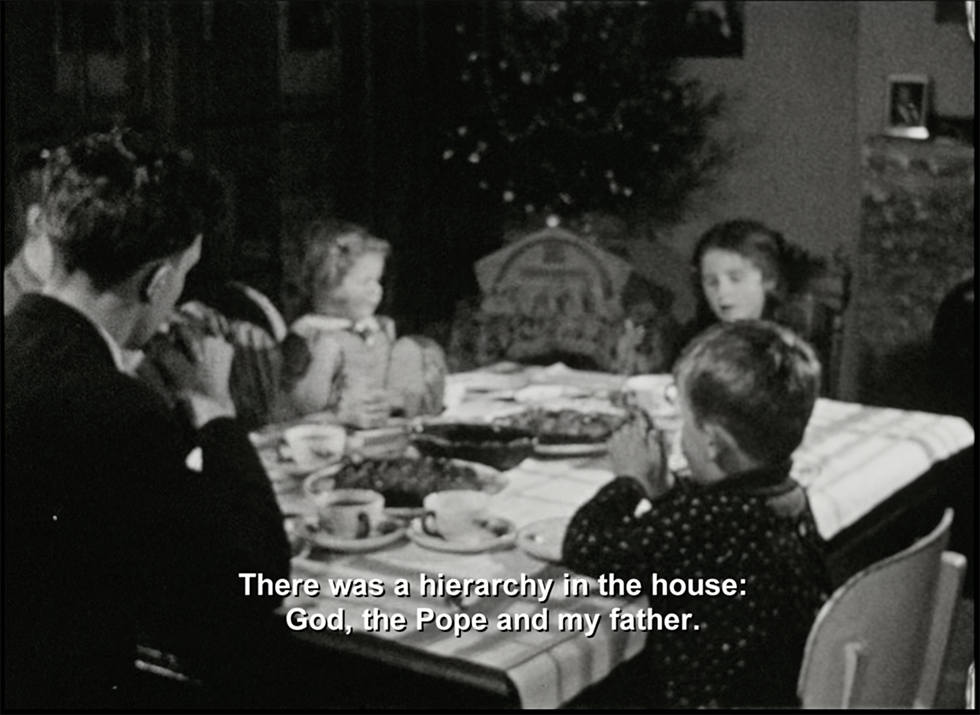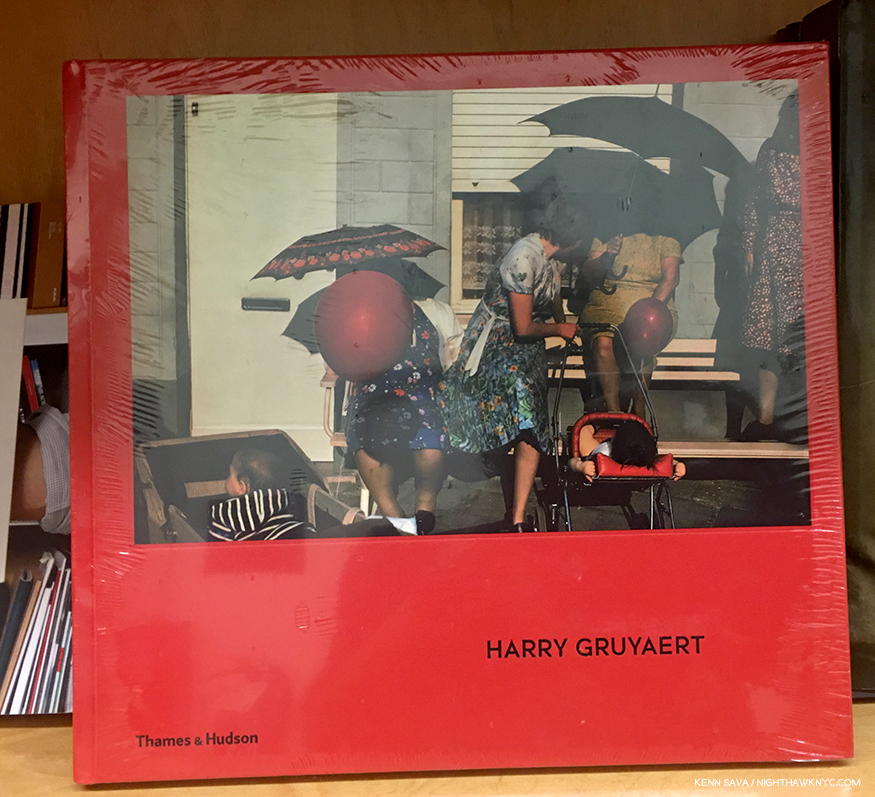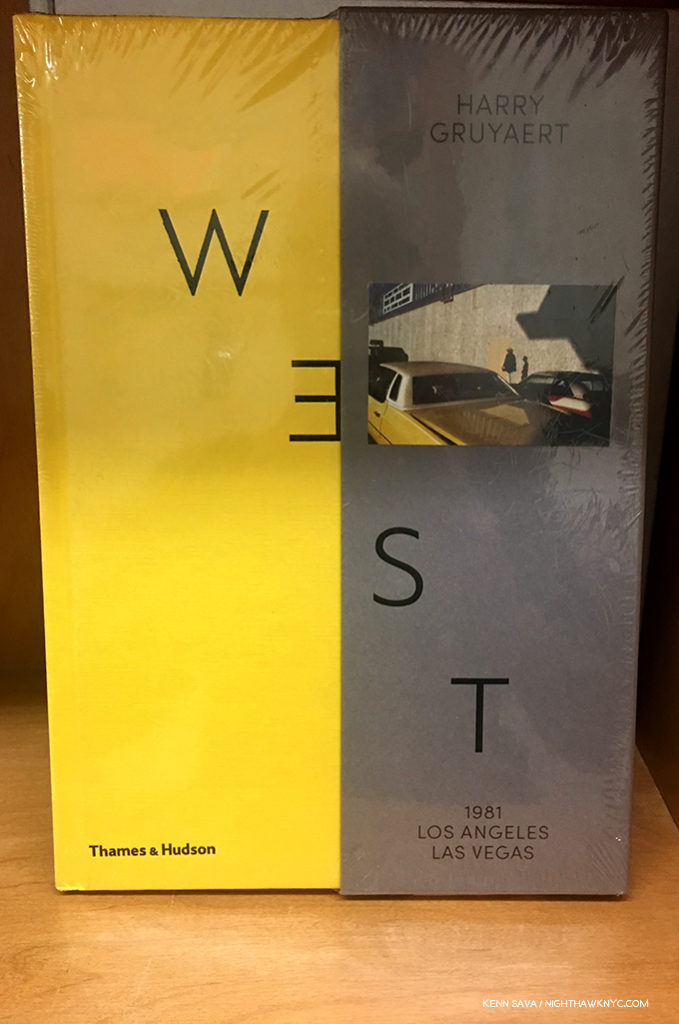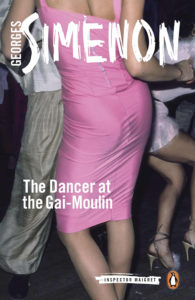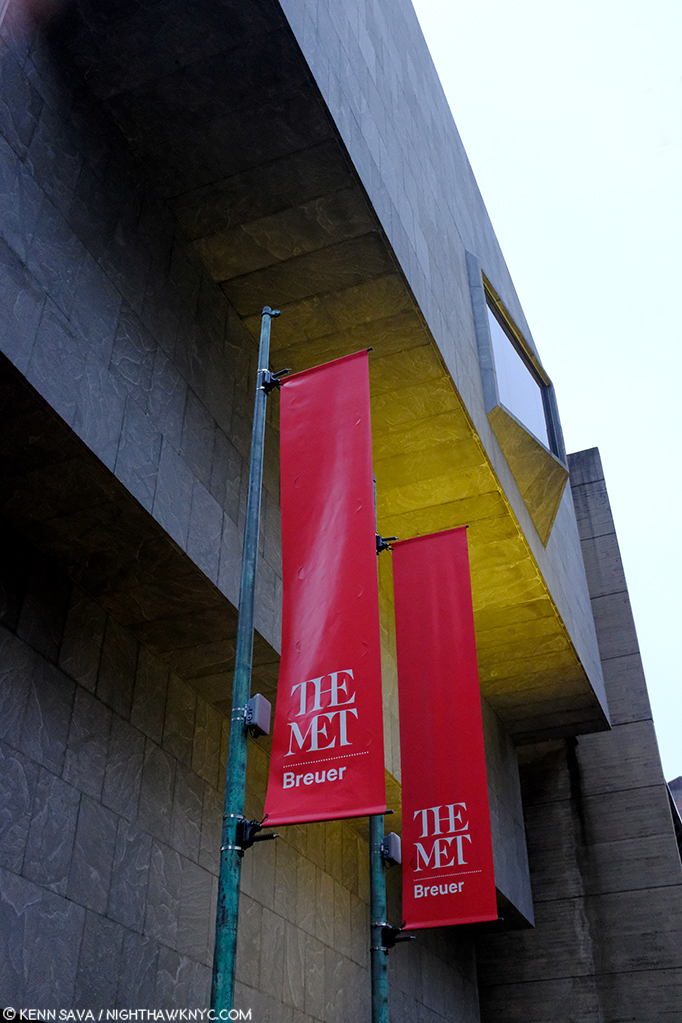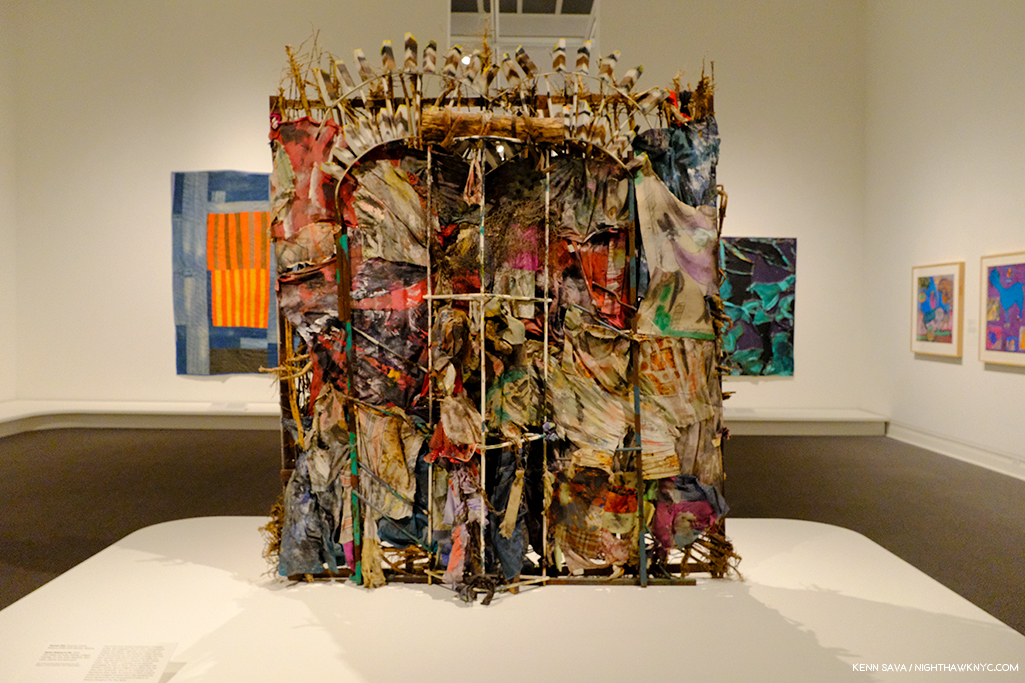Written by Kenn Sava. Photographed by Kenn Sava & Shane Rocheleau.
Five Photographs, in the recent Aint-Bad Curator’s Choice, Issue No. 12, and the accompanying interview with Stephen Frailey who chose him to be included, were enough for me to put Shane Rocheleau on my “watch list.” It turned out I didn’t have to wait long to see more.
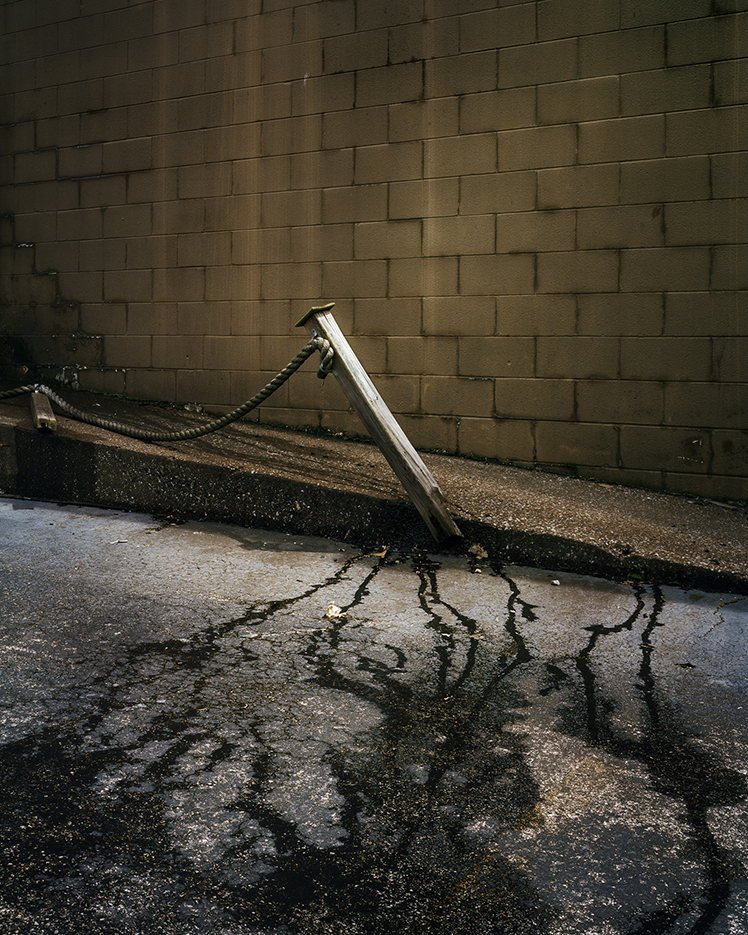
This Photo is called Broken Stake in the book. I’ve also seen it referred to as Bleeding Stake. As he reminded me when we spoke, a stake has a number of purposes…and meanings. This one also serves to create a riveting image. Photo by Shane Rocheleau from You are Masters of the Fish and Birds and All the Animals. Click any Photo for full size.
Coming upon the Gnomic Book publisher’s table at the recent LES Fotobookfair, Mr. Rocheleau was on hand to sign his new Gnomic release, and first PhotoBook, You are Masters of the Fish and Birds and All the Animals (or YAMOTFABAATA, as it reads on its spine and so, is referred to). There he was discussing what he considers to be a good job of gluing the endpapers as I approached. When he paused, I asked him if I could see the copy he was holding.
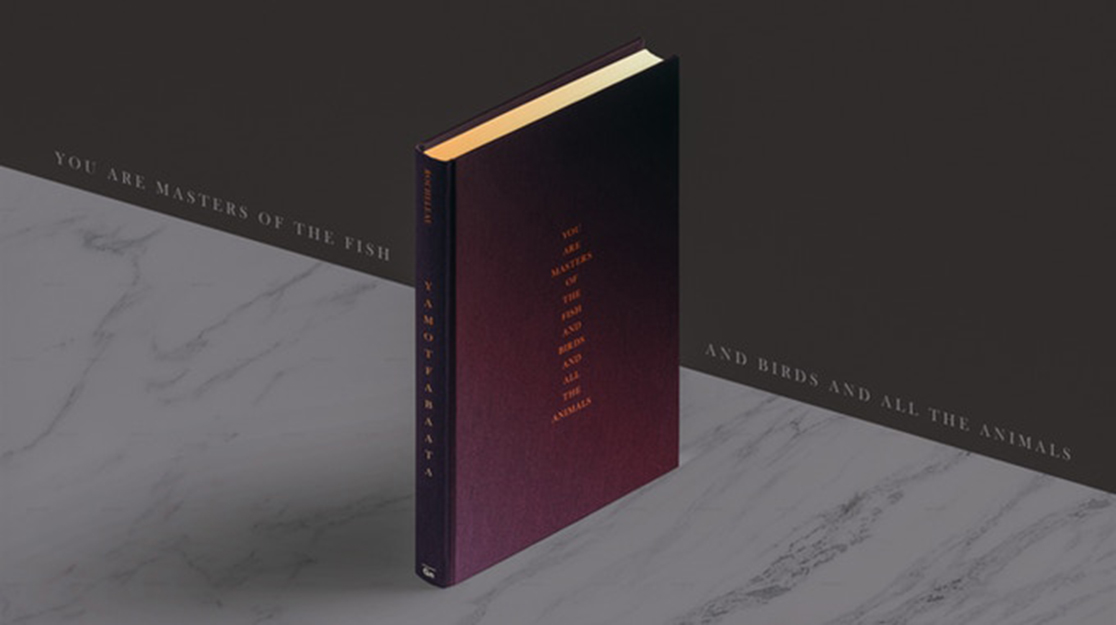
You are Masters of the Fish and Birds and All the Animals, by Shane Rocheleau, his first book, just published by Gnomic Book
The YAMOTFABAATA experience begins with the cover, which I swear has hypnotic qualities. The book is so beautiful to hold you don’t want to put it down. Opening it and looking inside, my initial conception of his work was quickly obliterated as I moved through the beautiful volume he handed me. I immediately realized that this was no mere collection of fine Photographs. Each Photo is exquisitely considered- both in its execution and in its placement. Here is a powerful book of visual poetry that casts a far ranging net capturing slices of the essence of the American condition in 2018, in macro and micro terms, with an epic impact that borders on the biblical.
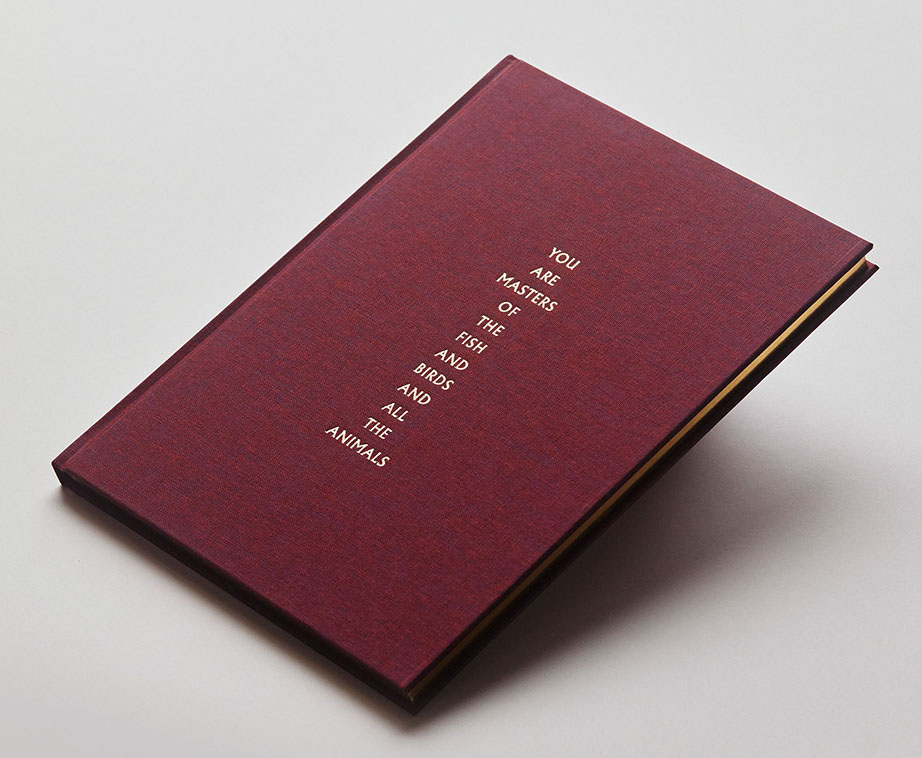
Or, YAMOTFABAATA the first book by Shane Rocheleau, just published by Gnomic Book. It’s a beautiful publication, clad in a stunning iradescent grape fabric called Bamberger Kaliko Duo. Its gleaming gold edging, carrying over the gold of the font. The whole thing has the feel of a Bible, echoing to the quote from Genesis in the title.
I had gone to the LES FBF to see two new books- Kris Graves’ A Bleak Reality, and Jason Koxvold’s Knives, that rarest of PhotoBooks that has its own tote bag (sold separately). While I came away very impressed with both, YAMOTFABAATA turned out to be my biggest discovery at the fair. As I looked through it, and Knives, I was struck by the similarity and the differences of the two books, both published by Jason’s publishing company, Gnomic Book.
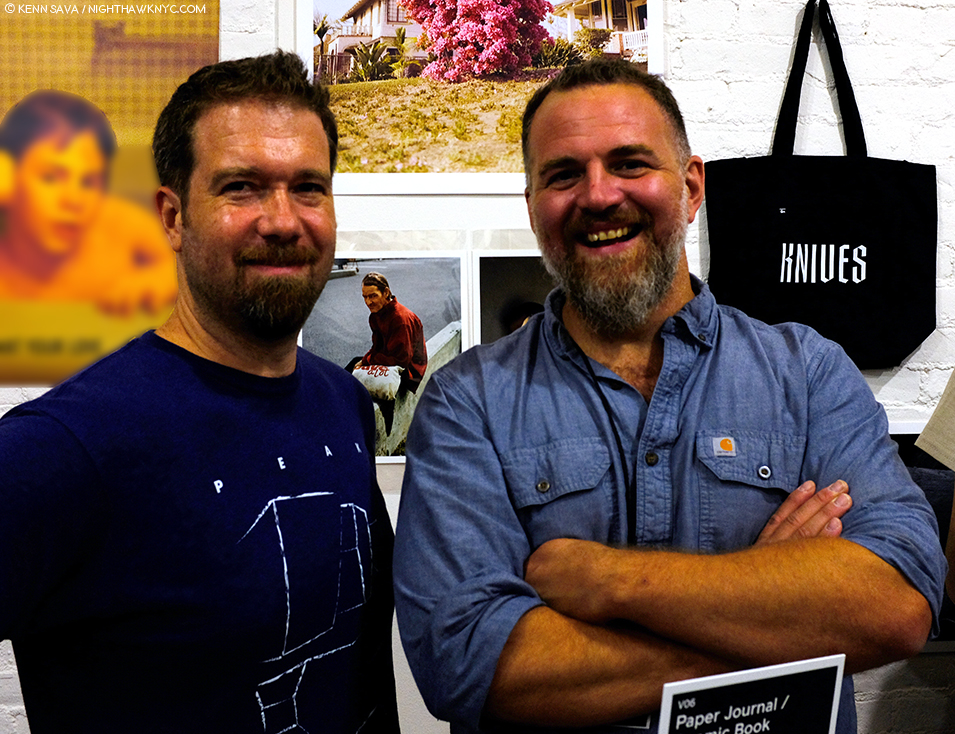
Shane Rocheleau, left, with his good friend, multi-talented Artist/Photographer and Gnomic Book publisher, Jason Koxvold, at the MoMA/PS1 Book Fair, September 22, 2018. The spiffy Knives tote bag is seen over Jason’s shoulder.
Some background- Shane Rocheleau received his MFA in Photography and Film from Virginia Commonwealth University (VCU) in 2007. He has taught photography as an Assistant Professor of Art at St. Norbert College in Wisconsin, as an Adjunct Professor at numberous institutions, and presently serves as an Adjunct Assistant Professor at VCU. IMDb lists him as the Writer, Director & Producer of the a 2008 short, Tide. YAMOTFABAATA is indeed a book that has a cinematic feel to it. As I wrote in my Third Anniversary Post in July, of my intention to ramp up the coverage of Artists who are not “big names” yet, but who are doing great and/or important work that I feel deserves to be better known. Shane Rocheleau is one such Photographer.
Researching Mr. Rocheleau, I was struck by his down to earth eloquence in the interviews I came across. Given the abstract nature of the images in his book, and the lack of any words from him in it, beyond some titles, I decided his voice should be the one featured in this piece, feeling that this would be the best way to compliment his exceptional book. For additional background on YAMOTFABAATA and Gnomic Book, which in two short years has gotten off to an auspicious start, I also reached out to Jason Koxvold with some questions, and his answers I weave into the following discussion with Mr. Rocheleau.
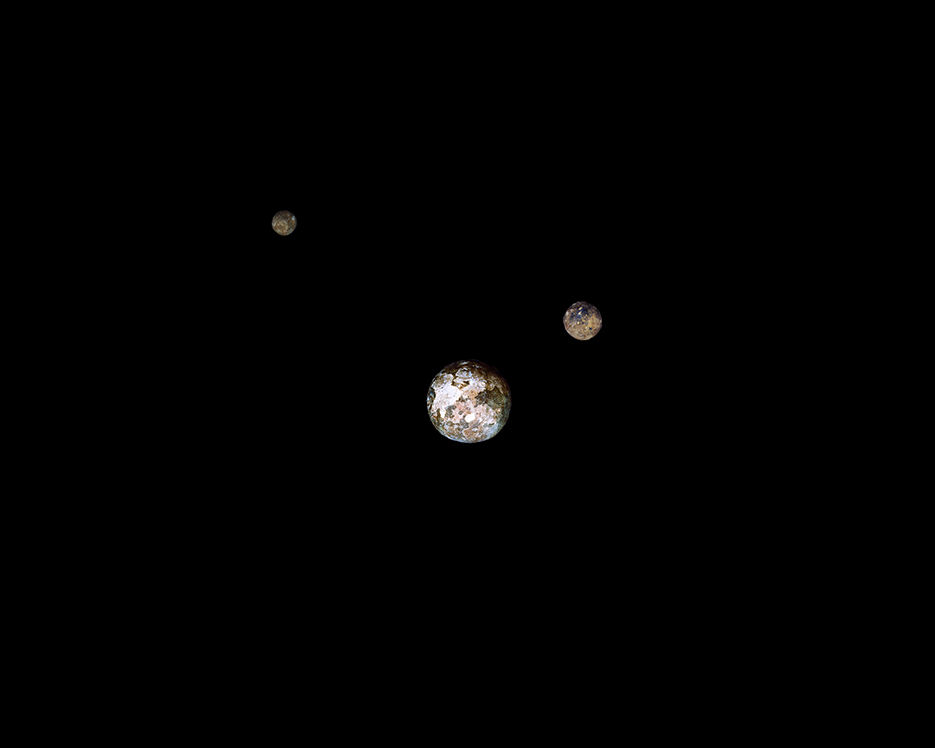
The first image in the book reminded me of the planets aligning in Stanley Kubrick’s 2001, until I discovered its title. Musket Balls. A fitting opening salvo, given the subject matter. Photo by Shane Rocheleau from YAMOTFABAATA
Kenn Sava (KS)- Let’s start near the beginning, Shane…When did you first become interested in Photography?
Shane Rocheleau (SR)- First day of classes a couple weeks ago, I asked my students a similar question: “I didn’t discover photography until my freshman year of High School”; “In fifth grade”; “When I was three”. That artists are discovering photography so young is wonderful news for the medium. Photography found me when I was 22. Two friends of mine and I went cross-country in a 1990-something blue Ford Escort Hatchback. I had no illusions that I’d write the great American road-trip novel, but I figured I’d try anyhow. First night, we camped on the shore of Lake Eerie. We awoke next morning seeing sparks and feeling the gasoline running through us, intent on getting elsewhere. My buddy handed me his little Kodak Andvantix camera: “Take a pic of me at the water’s edge.” “Yup, got it.” When I released the shutter (and I’m very sorry for the pun, but) something clicked. I really never gave him that camera back. Every town we hit I went straight to the drugstore to find film. Photographically, I’m still on that trip. (Suffice to say, the novel didn’t get written.)
KS- What, or who, were your influences?
SR- It was somewhere in Wyoming in July, 1999 that I said to myself, “I think I want to be a photographer.” At that moment, I knew of exactly one photographer: Ansel Adams. Through him, I discovered Edward Weston, Minor White, and Wynn Bullock. The latter two became my heroes. And for several years, I knew very few others, maybe only Richard Avedon. I’ve always tended toward the hermitage, and my hermitage kept me fairly naïve in those pre-Google days.
In the last decade, though, I’ve been endlessly influenced! To name a few: Ron Jude, Heikki Kaski, Dana LIxenberg, Alec Soth, Katrin Koenning, Bill Henson, Brian Ulrich, Cig Harvey, Greg Halpern, Robert Bergman, and on and on.
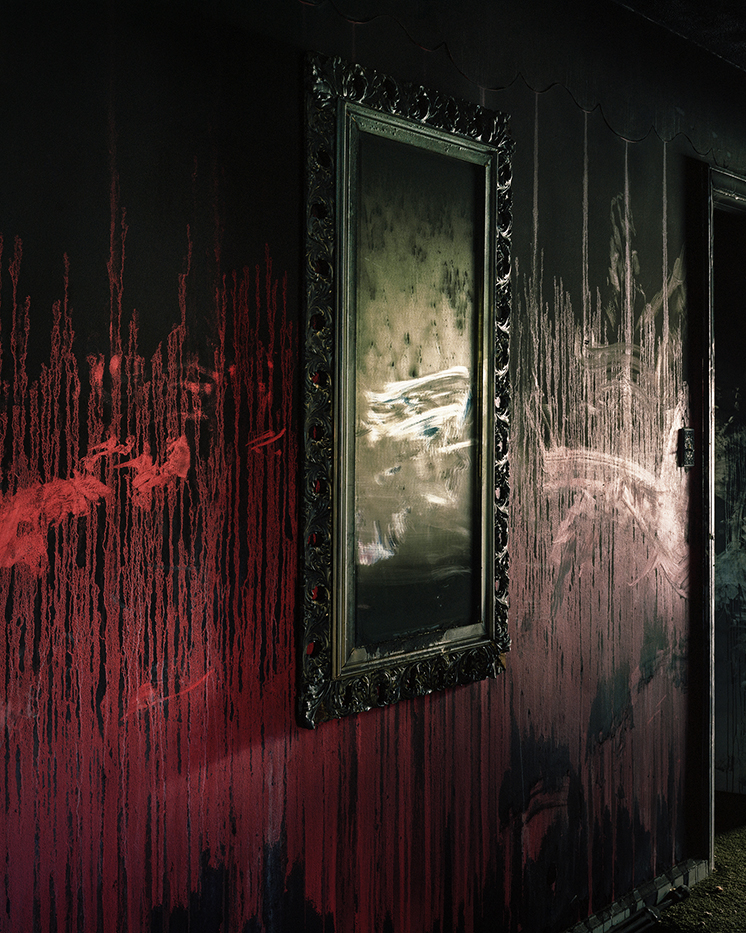
Narcissus. Photo by Shane Rocheleau from YAMOTFABAATA. To read Mr. Rocheleau’s comment on Ovid’s Narcissus, click this footnote1.
SR- My collaborative project (with Stanley Wolukau-Wanambwa and Brian Ulrich, primarily), A Glorious Victory, is about Petersburg, Virginia, and one I worked on immediately following Oyster Park, (a series of pictures I made 2011-2013, when I spent days and night hanging out with a local group of homeless men). While it’s impossible to pinpoint the moment YAMOTFABAATA began, it may have been when one morning a prospective portrait subject walked me around to the front of the motel where I’d been spending time. The police, medics, and press had gone, but the murder scene remained, seemingly untouched (“Site of the Death of Edward Jones”). The rich red vestiges of a man’s life left me drained and scared and liminal. I didn’t make a picture for another month. My guess is that when I picked the camera up again, it began turning away from Petersburg and toward myself. Slowly out of this inflection point rose YAMOTFABAATA.
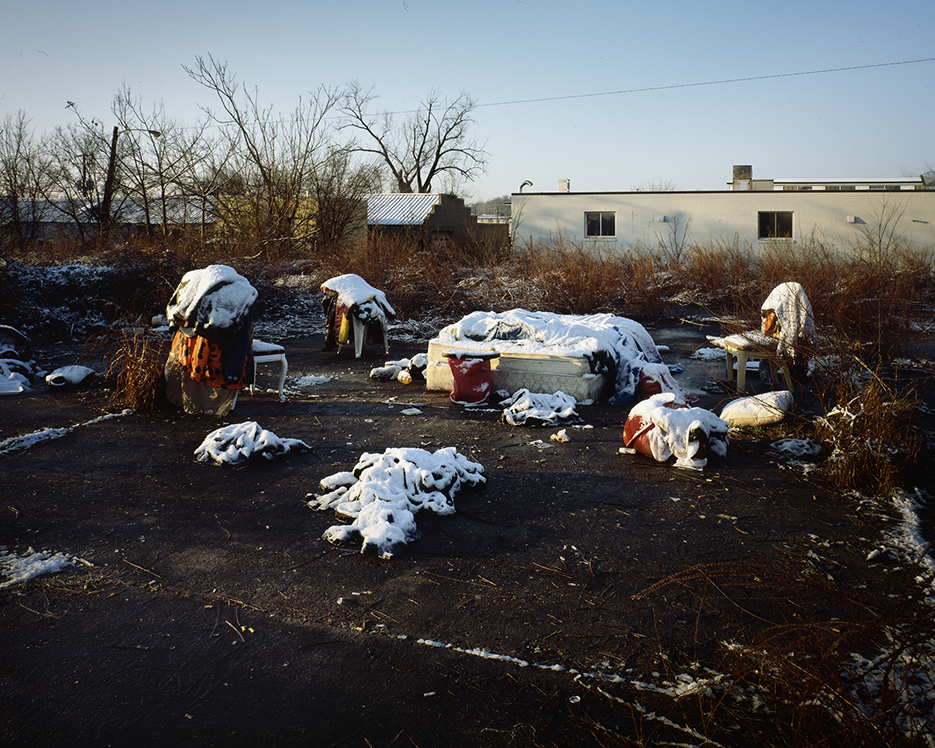
George’s Camp in Snow, from Oyster Park. About as clear of a definition of “homeless” as I’ve seen, and one of the most poignant. Photo by Shane Rocheleau.
KS- You’ve taken numerous Photos of homeless people, including those in Oyster Park, which is about them, as you say, and again in YAMOTFABAATA, where they are one element of the larger picture. When did you begin to take Photos of the homeless? Was it hard to gain the confidence of these folks?
SR- I moved to the Southside of Richmond in 2012. After work each day, I would take my exit home and pass a group of men who shared the corner at the bottom of the ramp. I lived just three blocks from where these men spent their days. On closer inspection, I realized there were tents everywhere, hidden if one doesn’t think to look. These men were my neighbors. Over a few months, I just couldn’t shake that “homeless” men may be the most objectified demographic in our country. One day I stopped my car and walked up to Deano, Lee, Juan, Bob, and George.
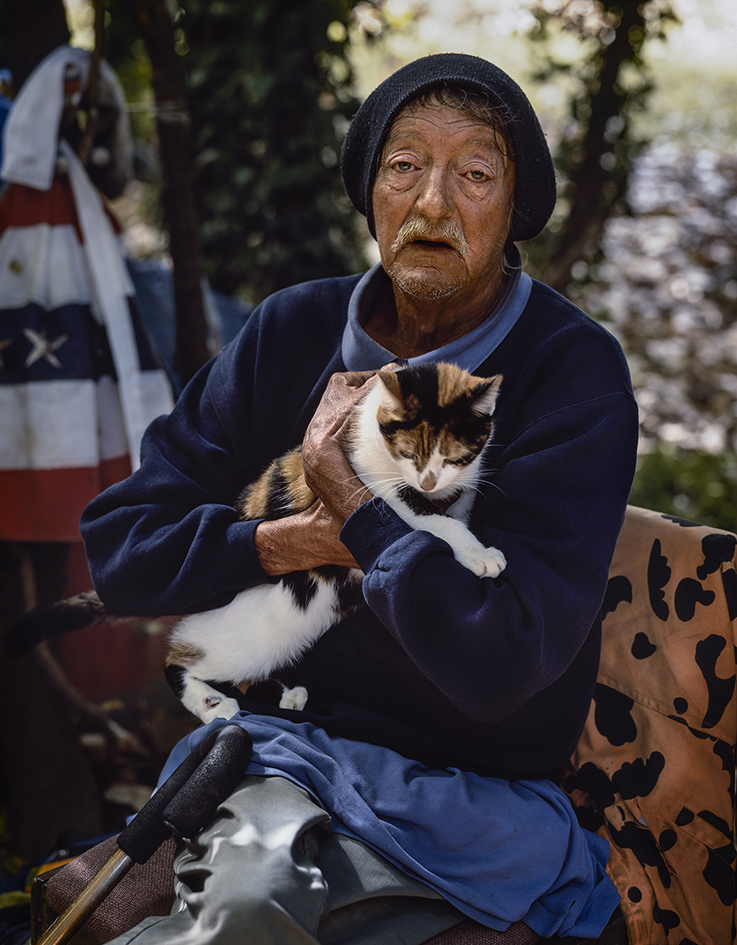
Deano and Kitty Kate. One of the Photos that appears in both Oyster Park and YAMOTFABAATA. Photo by Shane Rocheleau.
I told them who I am, that I’m a photographer, and asked could I sit down and talk? And they welcomed me. Some were more wary than others, but each of them, over many months, opened up to me; as did others who later arrived into this little community. I can’t remember the catalyst, but several weeks later, I made my first pictures. I hung out day and night, learned about their lives and they about mine; and, I made pictures. After 18 months, the shape of the area drastically changed, their tents and belongings were discarded by developers, and though I was able to keep in touch with some of the men initially, I haven’t seen any of the men in many years. The men of Oyster Park taught me more about life and humanity than anyone or anything before or since. I’m so grateful for my time with them.
KS- YAMOTFABAATA‘s Photographs seem to be taken in various places. How long did the project take to shoot, and then to put into its final form?
SR- The pictures in YAMOT were made mostly in Virginia. There are several from Tennessee, as well, and one each from California and Alabama.
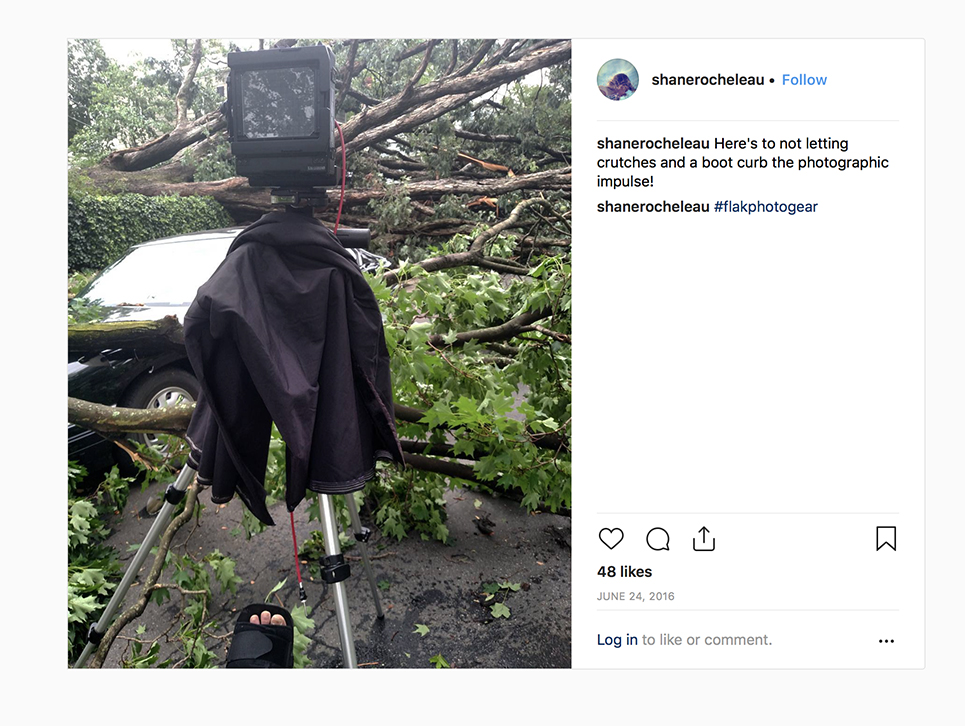
Behind the scenes. Even a torn achilles injury, devastating for us mere mortals, didn’t keep Mr. Rocheleau from creating Photos for YAMOT. Here he (at least his booted foot) is seen using his Toyo 45cf 4×5 field camera at the scene of what is now the Photo ——– (redacted. My read is Fallen Tree) in the book. Photo from Shane Rocheleau’s Instagram feed, June 24, 2016.
I made pictures exclusively for this project for about two years, but its first pictures were made several years earlier. The final form of the book took shape over a year and a half, and then, near the end of that process, I made several new pictures in a flurry of excitement and desperation. Though the book had been essentially finished, I now can’t imagine it without at least two of those new pictures: God and War (Inheritance), and, Untitled, which is a picture of my daughter. They feel necessary.
KS- Among those places, you’ve Photographed Virginia for a number of years, where you live and teach (I believe), what is it that particularly appeals to you about it as a subject?
SR- I live and teach in Richmond, VA. The narrative of American History criss-crosses Virginia through parts of five or six centuries. It feels like it’s all here: our earliest settlers and their struggles, John Smith, early treaties with and betrayals of Native Americans, the birth of our governing philosophies, Slavery, the Civil War and Confederacy’s Capital, John Wilkes Booth, Jim Crow, Free Black settlements, World War II and the military, the rise and fall of manufacturing, Civil Rights, 9/11, and so on.
But, truly, I photograph here because I live here. I’m just lucky that Virginia is so narratively and historically rich.
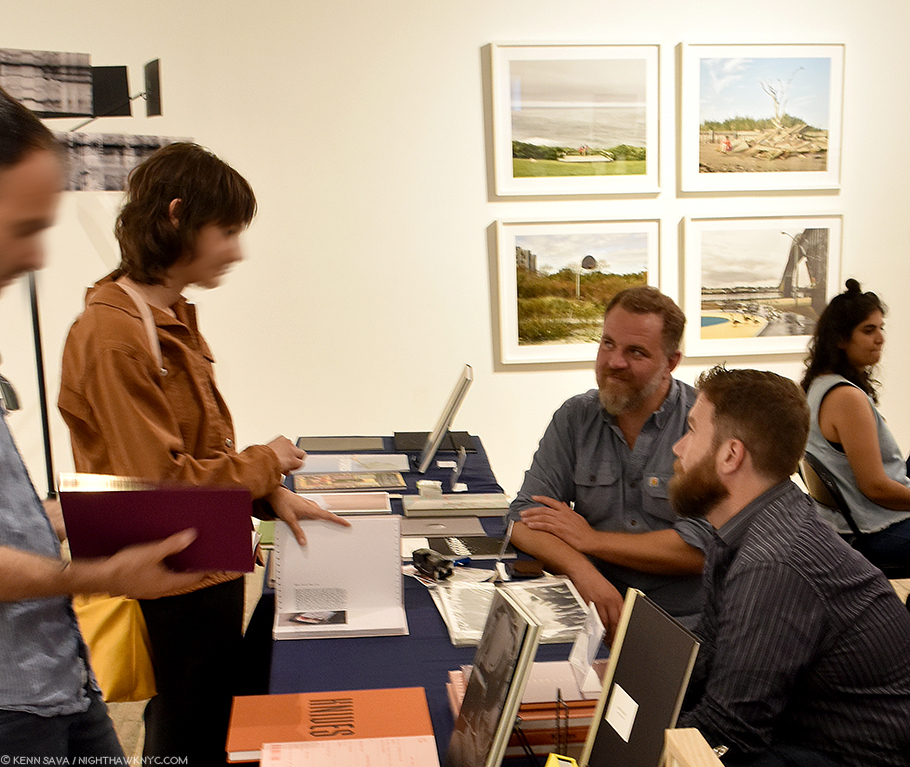
Photographer & Publisher Jason Koxvold, facing with his arm on the table, and Photographer Shane Rocheleau, right, discuss the finer points of their terrific new books at the Gnomic Book table at the LES Fotobookfair, July 21st, 2018, the day I discovered YAMOTFABAATA.
KS- How did you come to meet and work with Jason Koxvold and Gnomic Book?
SR- Our mutual friend, Stanley Wolukau-Wanambwa, used to host photographer gatherings at Jason’s Brooklyn studio. On occasion, I’d drive up from Richmond to partake. Stanley and I would arrive early, and Jason and I invariably hung-out before the raucous arrived. We became easy friends. The very last one of these gatherings, Stanley snuck my book dummy. Jason was the first to look at it that night. Soon after, he started Gnomic. I received an email one morning about a year later; he asked if I might consider that YAMOT be its second project.
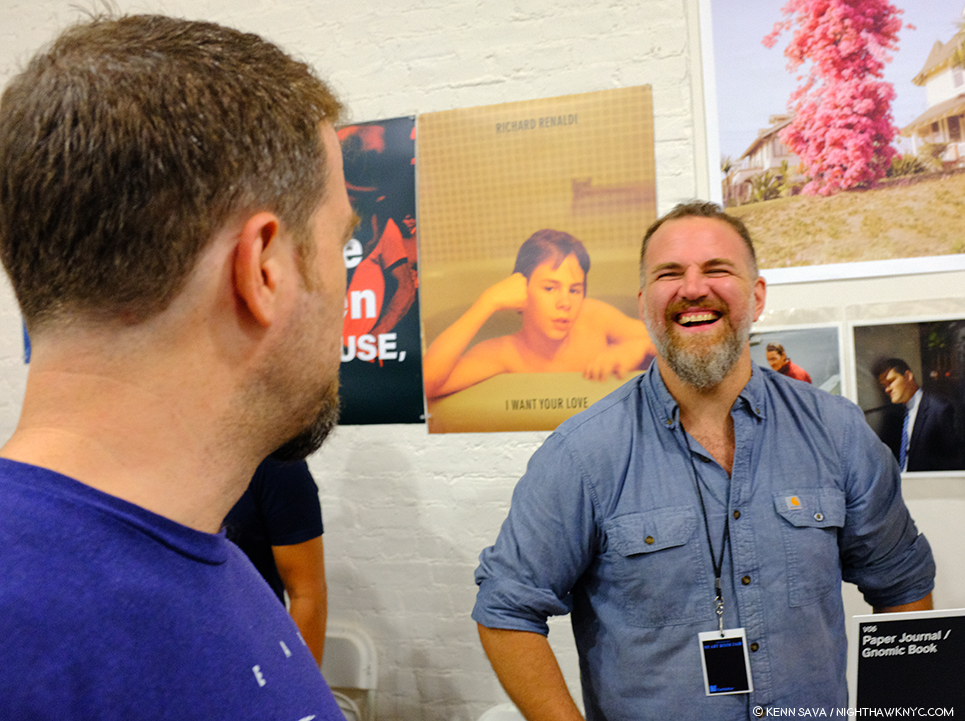
Spend any time around these two Artists and it’s immediately apparent what good friends they are. There’s an important lesson here that obviously translates directly to the quality of their end product.
I was close to publishing elsewhere, so I felt immediately reticent. Jason is driven and smart and talented. And he’s my friend. I wanted to work with a friend, with someone I knew I could trust. In the end, it felt obvious and simple.
KS- The book is an exceptionally beautiful object. You’ve spoken about the trip to Germany to print it, could you talk a bit about the planning that went into it? What role did Jason & Gnomic play in its realization?
SR- Jason and I Skyped or met almost weekly between December, 2017 and early March, 2018, when we departed for Germany. Each time we had a general agenda and discussed those items: design, sequence, materials such as paper type and fabrics, distribution, the Kickstarter campaign, where to print, whether to take a boat or a plane to Europe, font, the sources of my anxieties as best as we could identify, size of letters or pictures or drawings or run, whether this thing or that thing should be centered or just look centered, and so on. We beat to pulp any detail bigger than a quark.
Though we each gave the other lots of feedback: ultimately, our roles were fairly distinct. I sequenced the pictures, chose the text, and prepared the files for printing. Jason designed everything. He chose the font and the fabric, designed the layout, created and kicked-off the Kickstarter, and planned our European caper. I’m so thankful to have found such an energetic, talented, and supportive partner in the realization of YAMOTFABAATA.
At this point, I’m bringing Gnomic Book founder/publisher Jason Koxvold in.
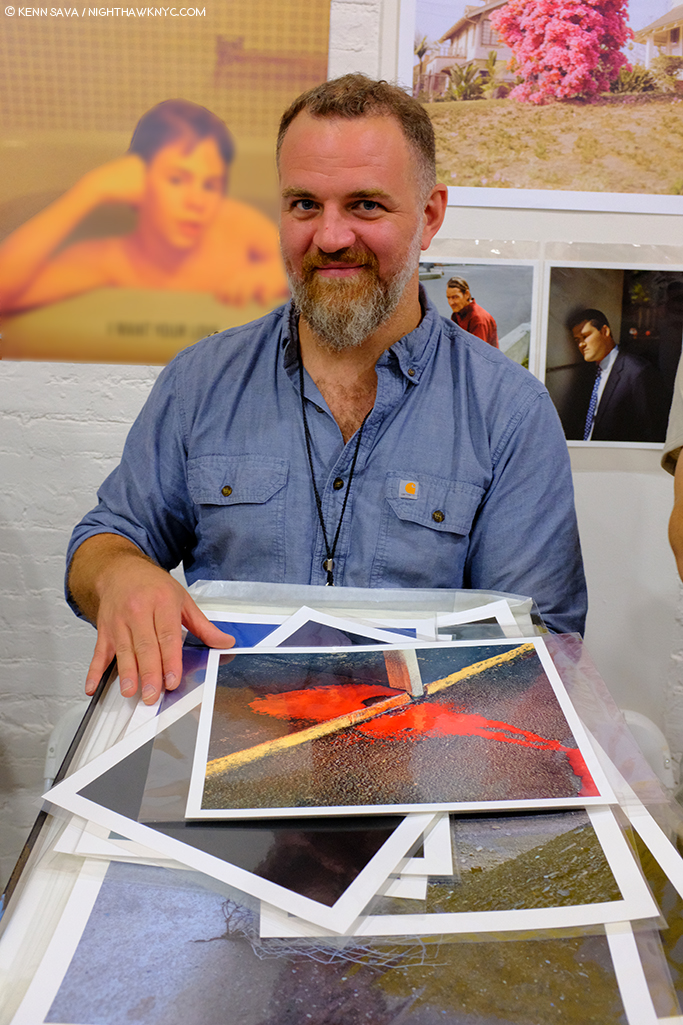
The multi-talented Jason Koxvold, who’s Gnomic Book is quickly becoming one of the most important newer PhotoBook publishers in the world. Here, he gives me a peak at a secret- Shane has made a few signed prints from YAMOTFABAATA in two sizes that are indeed for sale! Two portraits, in the smaller size, may be seen behind him on the right in this Photo are 100.00 each. The beautiful, larger size, that Jason is showing me are 200.00 per. You heard it here, first.
KS- Jason, how did YAMOTFABAATA come about from your end?
Jason Koxvold (JK)- In 2016 I was fortunate enough to see a maquette that Shane had made of his book, and it immediately resonated with me. As we became closer friends, we started to talk about publishing the book. Shane is one of the most intelligent people I know, deeply intuitive and yet rigorously thoughtful, so the process of editing the book and rationalizing design decisions was a pleasure.
KS- At the LES Fotobookfair, I was enthralled listening to stories told by publishers and artists about the finer points of bookmaking. Given this is your first book, and since so many Photographers are interested in making PhotoBooks, how did you learn so much about what to look for that you used in making YAMOTFABAATA such an exceptionally beautifully produced book your first time out?
Shane Rocheleau- Firstly, I have many wonderful, giving, and engaged friends; many looked very closely at the many manifestations of this project. Their feedback was invaluable and inspiring. Without those whom I thank at the end of the book, there is no book.
I look at Photobooks weekly. Even if unconsciously, I’ve learned a rich Photobook language through this practice. I’ve thought enough about my new lexicon that some of my decisions felt rather natural and intuitive, like speaking. But honestly, that production value is on Gnomic. Jason is uncompromising on quality. I think it’s beautifully done, too; I didn’t imagine it would be this beautiful.
KS- What was the most difficult part?
SR- Printing day front flanked me; I marched with the work toward it. I’d never needed to commit so fully to artistic action. Nothing was more difficult than finally yelling charge and letting the work go, committed and flawed and unfinished, off to the printer, off my desktop, dispossessed. I felt beleaguered, like a lonely, impotent General slumped in a three-legged chair. (Except no violence or gore or threats to life and such. How privileged am I that that’s one of the more difficult things I’ve done in years?)
KS- The Title List is sure to fascinate readers. 20 out of the 50 images have their titles fully crossed out, another 10 are partially crossed out. If a reader is really determined, they could most likely still make out many of the crossed out titles. Without giving away the mystery, could you speak about why you decided to do it this way, and why you decided to use the black marker instead of naming them “Untitled?”
SR- I don’t mind “Untitled” as a title. I do mind 40% of pictures titled this way. I don’t like that sort of redundancy. But I also don’t like when titles give too much away. With that said, some titles – and the information carried therein – were absolutely necessary for the book’s narrative (think Patrick Henry’s words, or that the building near the end is a Federal Reserve Building). My quandary then: how do I balance that I want to withhold information and avoid repetitively titling pictures “Untitled” and provide the information I deem integral to understanding this book?
I’ve used redaction in past projects, so I already had the language at my disposal. Given that redaction is an indispensable element of propaganda and indoctrination, the solution seemed almost obvious once it suggested itself to me. Plus, it’s interesting to look at. The unintended benefit of this solution is that the title page is part of the art rather than a perfunctory addendum.
KS- Another element is the fairly frequent use of blank pages. I counted over 50 including 5 sets of double blank (facing) pages. In many cases, they serve to set off an image on the opposite side, which is common in PhotoBooks, though their appearance, particularly in the use of facing blank pages, feels unpredictable. Are they purely there as a means of pacing the images, or…?
SR- In music, there are breaks. Those breaks signal a shift and are necessary for establishing rhythm. I love thinking of Photobooks as musical. I tried to sequence and break YAMOT musically, if you will. But with that said, I know no more about music than what I’ve gleaned while listening. My best instrument is my voice, and it’s not good.
Also, while a book requires that individual pictures be sounds in a larger symphony, I also wish for each picture to be a self-contained piece. As you note, much of the book has one picture per spread, alone in space; of course, each still generally follows and is followed by another. This solves my need to eat my cake and have it, too.
KS- There’s so much that YAMOTFABAATA has in common with Knives, your publisher, Jason’s, terrific new book. Both deal with the failure of promises and institutions, the realities brought on by a changing world bringing shrinking opportunity in the USA for many, and the state of the country the white majority has created Your’s is more abstract, while Jason’s is more documentary. Jason’s looks at life in the Hudson Valley, after the loss of its 150 year old cutlery industry, and your’s looks at a wider realm. Still, they’re two sides of the same coin in so many ways. Is that coincidental?
SR- On the one hand, it’s absolutely coincidental. Jason and I each began our respective projects independent of the other. On the other hand, Jason and I are friends. We have conversations, many of the same concerns, and, as fairly well-off white dudes, similar experiences in the world. He thinks deeply about his position, and I try to, as well. It is not a coincidence that as persons participating in the same on-going conversation – on whiteness and race, poverty and opportunity, privilege and responsibility – we would independently make work addressing those very things. Indeed, many of my photographer friends are making work that at least obliquely confronts these same cultural difficulties, ills, and realities.
KS- I then asked Jason if he hesitated to publish YAMOTFABAATA because of its similarities to Knives, or if he saw it as “complimentary.”
Jason Koxvold- Shane and I were both coming at the same themes from very different angles; in that regard the two can be seen as complementary to some extent. I like that in viewing both, readers might build some kind of mental Venn diagram in terms of where our ideas overlap and where they don’t.
KS- On the Gnomic site, it says that the focus is on exploring the notion of the book as object, which is easy to see with Knives, its sister book, You were right all along, (or YWRAA) and YAMOTFABAATA. As far as YAMOTFABAATA goes, what were the particular challenges in making such a beautiful book?
JK- Each book we produce is an attempt to make something greater than the sum of its parts. With YAMOTFABAATA we wanted to echo the quality of religious texts in the form of our book, using an iridescent purple cloth, gilded edges on the book block. Each of these decisions incurs some level of cost and technical challenge; our printer had to outsource the gilding to a company that specializes in bibles. Fortunately, working with experienced craftsmen in ‘Old Europe’ gave me a great deal of confidence in the process.
KS- Given your diverse and successful background, why did you decide to start Gnomic Book?
JK- I wanted to leverage and combine skills which I had acquired over the course of my career to make objects that have some kind of permanence, collaborating with different artists to do so. It’s truly a mutually beneficial process.
KS- Before I actually saw it, I heard the book is ostensibly about white masculinity. That turns out to be true, as it shows what those in power and their institutions have made of the world. However, none of the white men depicted seem to be enjoying themselves or their “status” in the world. Then, there are other themes that run through the book- religion, decay, death, national institutions, and hovering over all of it, the power of nature to superimpose its supreme will on man at any given point. That’s a lot to take on in one book. Did it feel that way when you were making it?
Shane Rocheleau- There is a contradiction driving white male rage in this country: at the top, white men still reign. Women and minorities represent less than 20% of congress, for instance. But uniformity at the top is belied by a slow progression toward equality in the body politic. White men in this country are raised by parents and the American Dream alike to believe power and supremacy are their personal destinies. Except it’s not, not for most white men. Many white men, like so many other demographics, are struggling. (And for those who aren’t struggling so much? Loss is loss, even to one who still has more than everyone else.) Increasingly, white men must settle for less than supremacy. While you and I know this to be right and necessary, I imagine many white men have not resigned to relinquishing any of the historical spoils of being born white and male, especially when in both cultural messaging and the demographics of power, the opposite is suggested. It’s important to me that I seek to empathize. The men in my book, largely, represent this contradiction. I wish I knew how to demonstrate that equality is not a zero-sum game. The lesser the inequality, the happier and more decent everyone becomes, bottom to top.
To your question about taking on so much in this book: I’m always some version of overwhelmed and confused, so inasmuch as I always feel a bit like I’m taking on too much, it absolutely felt that way when I was making this work. With that said, I wanted to address each of those themes you highlight. It was a fun problem to solve: how do I weave so much into so little? My answer is my book.
KS- The 4 women in YAMOTFABAATA each seem lost in thought. In Jason’s “Knives,” one of the final Photos is of a mother who stares out at the camera while holding a young child. In your book, your daughter is seen in the final image. In it, we see her through what appears to be a rain streaked window, where we can barely make out that it’s a young woman, but, as in many of the other portraits in the book- of male and females, we can’t see her eyes. I see dread and melancholy in this image. How is the young woman going to deal with all of this metaphorical “rain” in the world? The window is made of glass, and so provides limited protection from the world while allowing a chance to see it outside. Perhaps, she’s sleeping through the storm. Perhaps she’s lost in a dream, or lost in thought, or worry about it.
SR- I appreciate that reading. And to continue it, maybe, after the storm’s climax: the rain should let up, as rain does. The young woman steps outside. The gentle day drips and refracts little miracles, smelling of nectar and the dusty after-rain. And then the flowers grow, the bugs buzz songs under a symphony of chirping, and the world in her eyes can be new and open. For my daughter, and everyone else, I hope this is the case and that after the storm it’s better than before: kinder, calmer, with less disparity and more community. As I write this, though, I’m scared I hope for too much, and I don’t know if I’ll be there for it anyway, if it does ever manifest. Maybe it will, and maybe that’ll be my daughter’s book.
KS- Elsewhere, your father is included, and there’s a “Self-portrait,” interestingly showing only your right arm and hand, which you probably use to take your Photos with. These, and the Photo of your daughter add to the autobiographical nature of the book. How did they feel about being included?
SR- My daughter refuses to be photographed. I got lucky with this picture: I was making a picture of my girlfriend’s mother, Holly, seated right there where my daughter is seated. My daughter wanted to help. Because I needed to direct Holly and she is seated inside a closed car, I called her cell phone. She placed it on speaker then on the passenger seat. I gave my daughter instructions for Holly, and she relayed those instructions through my cell phone. After we were finished, I think my daughter was taken enough by the whole experience (and hopefully by all the wonderful seeing!) that, for the first time ever, she asked if I could photograph her. Absolutely!
But while myriad subsequent gestures suggest she’s really happy to be a part of the book, she hasn’t explicitly said so (she’s not just in a picture and the subject of the dedication: she also hand-wrote the title for the title page and drew a little drawing that’s hiding toward the end). As for my dad: same. I think he’s happy to be part of it, but he’s thus far kept it to himself. Everyone has those things they haven’t the tools to express.
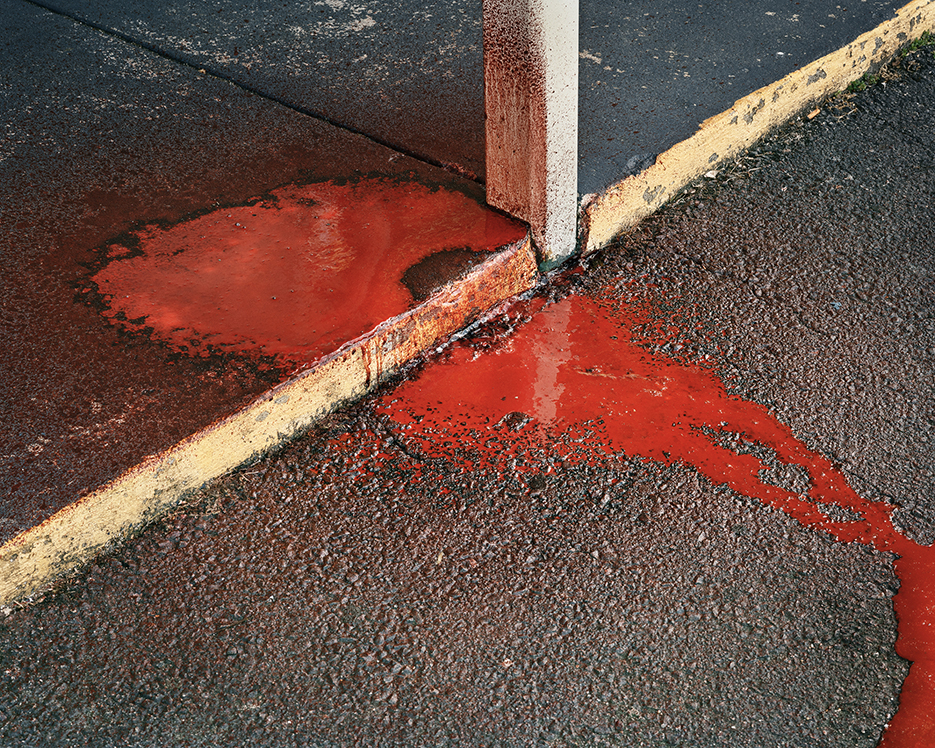
Site of the Death of Edward Jones. Unforgettable. Photo by Shane Rocheleau from YAMOTFABAATA. It also appears in his series, A Glorious Victory.
KS- I will preface it by saying I’ve learned the hard way not to ask about specific works less the answer takes away some of its mystery. I’m hoping that won’t be the case if I ask you about Edward Jones, as in “”Site of the Death of.” I haven’t been able to find out who this might be.
SR- Edward Jones is the man who bled out above that spot. He was shot in the head in a drug deal or burglary gone wrong. I arrived at the motel where he was staying to make pictures of another resident, unaware what had transpired just hours earlier. Though the police had left, the blood that had dripped from the second floor onto the parking lot below remained. It was the most horrific thing I’ve ever seen and felt. And that’s the short story. As for where? Petersburg, VA. I felt like I needed to name him. It felt like the right thing to do, rather than entitle the picture “Site of Anonymous Man’s Death” or something of the sort.
KS- In the midst of so much darkness we move through in YAMOTFABAATA, and the white-male led world today …so many failed promises, including “the American dream,” so many broken institutions, including religious ones, there’s also the ever-present possibly of disaster…man-made or natural, all of which is poetically rendered in your book. The images speak to a world that’s cracking, not seemingly working for anyone depicted, particularly the deceased Edward Jones. YAMOTFABAATA leaves me feeling that it’s hard to have hope in 2018. You appear in the book as an older version of your father’s child, with your own child appearing at the end. And so, you’re in the middle. As much as the book looks forward to your daughter’s generation, it’s also a looking back on your father’s and our generations. It’s obvious that things didn’t get this way in one day, and the weight of history is, at this point, daunting. Given all of this, why did you decide to dedicate it to your daughter?
SR- In the ways I know how, I am working to make my world a better place than it was before me. I think both my parents really did try to do the same thing. They raised me well, lovingly, to be a kinder, more open human being than was recommended to them. I’m empowered by this demonstration in my life of how to actively make things better than they were. I want my daughter to be empowered by the same demonstration. I hope I raise her to be a decent and active participant in whatever community she finds herself. Like her picture, the dedication is an act of faith in the face today’s discord; I can’t tell the future, so I won’t suggest to her that discord is inevitable. She has power. I hope she uses it for good, and better than I’ve used mine.
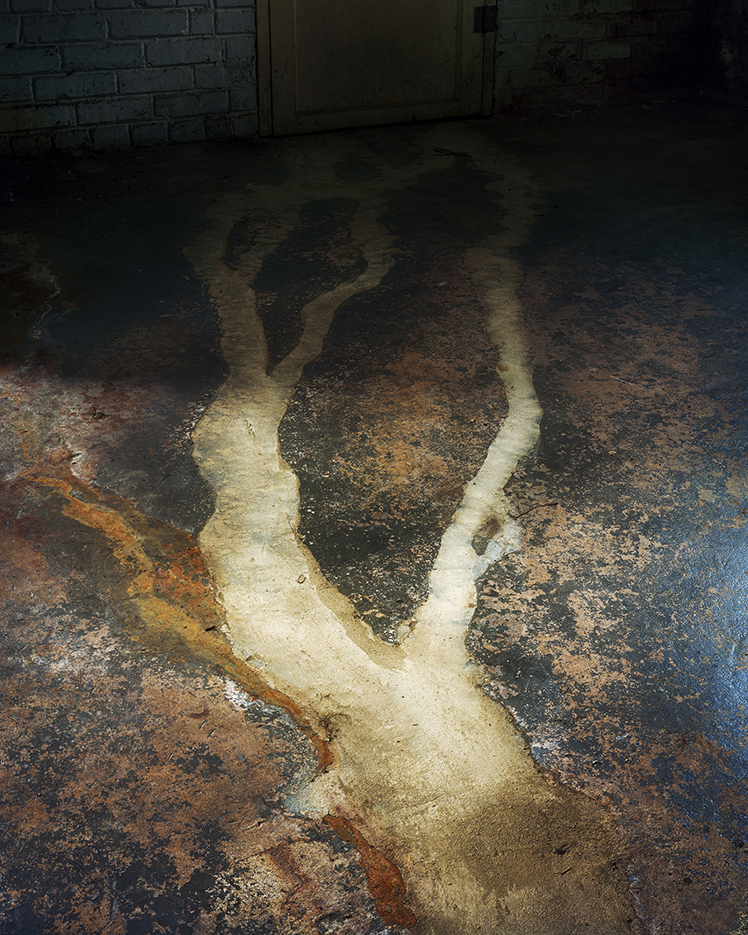
——- Cellar Door The first three words are redacted, hidden under a black marker strike through. My reading is From Under The Cellar Door. Photo by Shane Rocheleau from YAMOTFABAATA.
KS- Since NHNYC was originally primarily a Painting site, until it was hijacked in the dead of night by Photography in late 2016, I have to ask you what, if any, role Painting has played in your Artistic life and development.? (If any, which Artists or works?)
SR- I grew up loving Picasso. I think he taught me that strange can be good and about balance inside a frame. When I studied a bit of art in college, I found myself compelled by the Hudson River painters, Caravaggio, J.M.W. Turner, and Rembrandt Peale, amongst others. More recently, I’ve loved Lucien Freud and John Currin. I’m guessing you can tell by this list, though, that I’m not exactly keeping up with the trajectory of painting. I can say this, though: I work my photographic files very much like I imagine a painter might. I add and subtract color and tone in strokes, attempting to create a canvas that can instruct and contain the viewer’s eye. I fear, though, that even in saying that, I sound a bit naïve!
KS- You thank Gregory Halpern. Being very taken with his work, myself, as I’ve written many times, what was his involvement in this…if he was?
SR- I don’t know Greg that well, but I respect him immensely. He’s as good a person as he is an artist. Greg was not involved, per se. But at that same photographer gathering I spoke about earlier, he was the last person that night who looked at my book dummy. The next day, he, Stanley, and I were walking in Manhattan and Greg pulled me aside. He apologized for not commenting on the dummy the night before. Still reeling that anyone saw it – nevermind one of my heroes – I froze. He told me he loved it and asked if he could recommend it for a fairly major prize. That moment drew me as close to vertigo as I’ve probably ever found myself. He told me that my “pictures are meant to be seen”. Because of Greg’s gesture to me that day, I have a blessing to allow for just that.
KS- You’ve spoken about thinking of music while you were editing and sequencing YAMOTFABAATA. Do you listen to music while you Photograph?
SR- I don’t. I photograph with only the sounds of my environment, and when I’m under the dark cloth, I don’t even hear them. But when I’m editing? I blast music! You’re likely to hear Radiohead, Tom Waits, Mazzy Star, Pearl Jam, Tragically Hip, David Bowie, Lou Reed, Pink Floyd, and 80s hits, amongst others!
KS- The book has gotten quite a bit of critical notice already. Does that surprise you?
SR- Yes, I’m totally surprised. I believe the work I’m making is relevant and worth seeing, but I also understand that there are significant challenges getting work in front of an audience beyond my small community of friends and artists. I’m so happy YAMOTFABAATA is getting noticed. I never expect exposure. This is a wonderful surprise.
KS- Finally, with your busy life, have you had any time to think about your next project?
SR- I’m deep into my next project. Though it’s still shape-shifting too fast to capture, I’m really excited about it. It’s about the smallness of a human being, paranoia and his ascetic’s loneliness, oblivion and artifacts, spiders and webs and life-cycles…if any of that makes any sense at all. I guess we already covered that I’m generally overwhelmed and confused; I’m also generally excited by my work, in spite of all the persistent liminal turmoil!
BookMarks–
YAMOTFABAATA, which contains 56 color plates, is currently available in a first edition/first printing of 500 gorgeous copies, which are not going to last long. It may be purchased here, or here.
Jason Koxvold’s Knives (and its tote bag), may be ordered here, or here,
Aint-Bad Curator’s Choice, Issue No. 12, may still be available here. If it says “sold out,” email them directly and ask. They told me recently there are a few copies left. It contains 15 curators each getting a section, who choose 31 Photographers between them, representing what they feel are “the best of contemporary Photography.”
*-Soundtrack for this Post is Karma Police, by Radiohead from 1997’s O.K. Computer. Lyrics are here, video, right here-
My thanks to Shane Rocheleau, Jason Koxvold and Kris Graves.
My previous Posts on Photography are here.
NighthawkNYC.com has been entirely self-funded and ad-free for over 6 years, during which over 250 full length pieces have been published. If you’ve found it worthwhile, you can donate to keep it going & ad-free below. Thank you!
Written & photographed by Kenn Sava for nighthawknyc.com unless otherwise credited.
To send comments, thoughts, feedback or propositions click here.
Click the white box on the upper right for the archives or to search them.
For “short takes” and additional pictures, follow @nighthawk_nyc on Instagram.
Subscribe to be notified of new Posts below. Your information will be used for no other purpose.
- Shane Rocheleau- “I’ve been meditating on empathy for over a decade, now, on its receipt and provision and on its absence. But when I read Ovid’s Metamorphoses, empathy became immediately central to my practice. Upon a closer reading of the Narcissus myth, I realized it isn’t about Narcissism at all; rather, it’s about the power and necessity of empathy. Narcissus is not a Donald Trump; he is a beautiful boy living in a Greek culture wherein beautiful boys are lusted after and objectified (this culture does the same to young, magazine-thin women, for instance). When Narcissus kneels to the pond, he sees his reflection and remarks:
I reach, your arms almost embrace me, and as
I smile, you smile again at me; weeping
I’ve seen great tears flow down your face (…)
Narcissus had only ever seen lust and admiration in the eyes of others; never had he seen his complex, human emotions returned to him. That new experience felt so necessary that he stays with its giver, forsakes sustenance, and ultimately dies.The combination of my giving this ancient character overdue empathy and coming to understand that empathy is this powerful and necessary was a profound and important personal experience. I am a better artist and person because of it.” ↩

